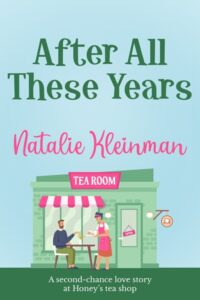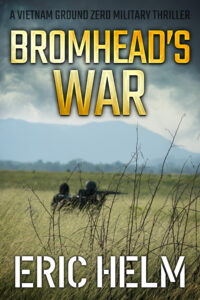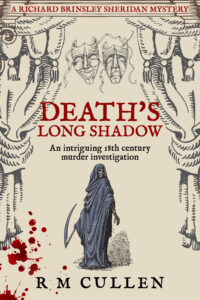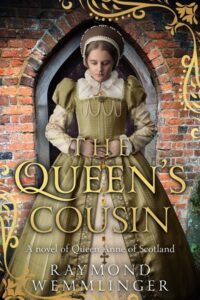Congratulations to Natalie Kleinman, whose second-chance love story, After All These Years, is out out now!
When Guy Ffoulkes walks into Honeysuckle ‘Honey’ Bunting’s tea shop in the little town of Rills Ford, she’s transported back in a flash to her teenage years – and to the pain of first love.
As a young girl she worshipped Guy from afar – but to him, she knows, she was simply his best friend’s scruffy younger sister.
Over the years Honey has poured her energy into her business and caring for her elderly mother, telling herself it’s enough for her. But no man has ever replaced Guy in her heart…
Now, fourteen years on, Guy has returned from Australia, a rich and successful architect, but a lonely man. And when he and Honey reconnect, neither can deny the spark between them.
But Honey’s loyalties are tested to the extreme when Guy reveals the reason for his return…
Does Honey know her old flame as well as she thinks? Will Guy let pride and ambition drive away the only woman he has ever loved?
And as the pair find themselves at the heart of a local scandal, can they find the strength to take a chance on love?
Congratulations to Eric Helm, whose action-packed Vietnam War adventure, Bromhead’s War, is published today!
Bromhead’s War is the thirtieth book in the Vietnam: Ground Zero series: action-packed, authentic historical thrillers set during the Vietnam War.
An Army general, on a recon mission near the Vietnamese/Cambodian border disappears when his aircraft is engaged by anti-aircraft fire.
A search using Air Force and Army assets is hastily set in motion because the general has information about planned critical missions.
Men are deployed from a Special Forces camp commanded by Captain Jonathan Bromhead, and he enlists the help of Major Mack Gerber and Sergeant Major Anthony Fetterman.
But Gerber and Fetterman have been given their own secret mission: to gather intelligence about the build-up of North Vietnamese Army forces just over the border in Cambodia.
And when those forces encroach on the camp, the situation suddenly becomes deadly…
Can they recover the Army general? Will the US missions remain confidential?
Or will enemy forces take over the Special Forces camp…?
Congratulations to
England, 1605

Anne of Denmark, Queen of England, gives birth to her daughter Mary, her first child since coming to England in 1603 when her husband James succeeded to the English throne.
Although they would have preferred a son, both parents are pleased the child is healthy, and their courtiers are thrilled with the birth of the first royal child on English soil in nearly seventy years.
The Scottish family has been welcomed by the English and the reign has started out well, despite continuing tension between the Catholics and the Protestants.
Although Anne has enjoyed the opportunities in England for promoting her artistic interests, she feels inferior to James, and finds satisfaction in rearing her four children, in particular her eldest son Henry.
Anne is determined to bring about an engagement for him with the Spanish infanta. But with anti-Catholic sentiment on the rise, it is not necessarily the wisest match.
Anne becomes pregnant again, but almost immediately afterward the news is clouded by the discovery of the Gunpowder Plot, aimed at the near total destruction of the royal family.
The troubling psychological impact on James is enormous, and Anne worries for the stability of their family.
Can she secure a suitable match for Henry? Will her children survive to adulthood?
Or could the Stuart reign already be doomed to fail…?
Congratulations to David Clensy, whose thrilling war-time naval thriller, For Those In Peril, is published today!
For Those In Peril is the first book in the Romulus Hutchinson Naval Adventure series.
Twin brothers Romulus and Remus Hutchinson grew up in a proud seafaring Liverpool family. So when war breaks out in Europe, they are both keen to sign up and do their part.
With their parents’ consent, both boys join up on their 16th birthday in October 1939 – Romulus as an RNVR sub-lieutenant on a Royal Navy destroyer and his brother as a deck hand with their father’s employer, John Holt & Company.
But with Romulus’s sadistic training officer seemingly intent on breaking the cadets’ spirits before their careers have even set sail, he struggles with the intense training.
There is no time for doubts, however, as the two brothers are quickly thrown into combat.
With Operation Dynamo around the corner, will the Hutchinson brothers both make it out alive…? Can they make their mark as their forefathers did before them?
Or will the bottomless deep claim yet more victims…?
Following the success of her many historical and mystery romances, including the Lady Fan Mystery Series and The Governess Trilogy, we are delighted to announce that we will be republishing eight backlist titles by Elizabeth Bailey.
In Elizabeth’s words:
“As a child, I found and read with relish Georgette Heyer’s historical romances. For several years, my parents gave me the latest Heyer as one of my presents at Christmas, thereby ensuring I would bury myself in the book until I finished it. It was inevitable, perhaps, that when I came to write myself, I chose to try my luck with historical romance. It took time, but I was successful at last.
“Of the eight books that Sapere is taking on, almost all feature a hero or heroine disadvantaged in some way. It is an ever-fascinating thing to me how the human spirit manages to overcome all manner of life’s apparent cruelties. Yet these are not necessarily dark tales, although they have their moments. It is the pleasure of writing romance that one’s task is to lead the protagonists through the scary woods and out into the light of happiness.
“I could not have hoped for a better home for these stories than Sapere Books. I’ve worked with them since the publishing house was formed and the editors are both meticulous and sympathetic to the author’s intentions. They are friendly, helpful and supportive. Moreover, Sapere covers are superb! I’m delighted to entrust my books to Sapere’s hands.”
The forthcoming titles are:
A Trace of Memory
A Lady In Name
Friday Dreaming
The Count’s Charade
An Angel’s Touch
The Veiled Bride
The Conqueror’s Dilemma
A Fragile Mask
Find out more about Elizabeth here.
Congratulations to R. M. Cullen, whose twisty murder mystery, Death’s Long Shadow, is out now!
Death’s Long Shadow is the second instalment in the Richard Brinsley Sheridan Mystery Series: eighteenth-century crime thrillers set in London at a time of Revolution.
Playwright Richard Brinsley Sheridan’s retreat to the country is interrupted when he stumbles upon a body during a woodland stroll.
The man is identified as Edward Stretton, cousin to Earl Cannock who Sheridan is residing with.
Stretton had a reputation as a scoundrel and seducer and was heavily in debt at the time of his death.
He had been poisoned, and when the Earl’s servants are questioned, unusual evidence puts one man in custody.
But Sheridan is not convinced of his guilt. And one another man is murdered, he suspects there may be a connection.
Can Sheridan uncover the link? Could he save an innocent man from death?
Or will this case prove too complex for this amateur sleuth…?
We are delighted to announce that we have signed a new naval fiction novel set during the Second World War by Anthony Palmiotti.

Anthony Palmiotti
In Anthony’s words:
“When searching for subjects to write about, I look for little-known stories or actions within bigger events that emphasize the strength of character and the contributions made by ordinary people — the individuals that make a difference to the outcome. Invariably, it is the strength of character of the common man or woman that determines the outcome — that makes the difference between winning and losing. It could be a single heroic action or simply a steadfast stubbornness. It might be the will to go on when common sense says this is not a good idea. They are the unknown people who make the seemingly impossible, possible.
“Operation Pedestal was just one convoy in a war that saw hundreds of convoys. Malta was just one island in a sea of islands. What makes these two different is that they faced extreme odds and yet, through a steadfast perseverance, they beat the odds. The citizens of Malta and the common men on the convoys showed an uncommon resolve. They simply did not give up, even when giving up was the smart thing to do.
“My take on Malta during the summer of 1942 and Operation Pedestal is not a history but a novel. A novel allows the writer to get personal. It not only offers the facts, but, hopefully, a feel for what it’s like when ordinary people are asked to do extraordinary things.”
Discover more about Anthony here.
Congratulations to David Field, whose Victorian thriller, The Long Delayed Revenge, is out now!
The Long Delayed Revenge is the tenth instalment in the Esther and Jack Enright Mystery Series – a traditional British detective series set in Victorian London and packed full of suspense.
London, 1899
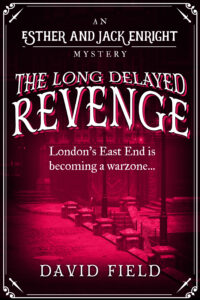
Jack and Esther Enright, with their four children in tow, have recently moved to a comfortable new home. Esther has settled into her dream job as headmistress of the local private school, owned by her mentor Emily Allsop.
But things are not going so well for Jack. Though he does not mind the commute to his high-ranking desk job at New Scotland Yard, he is disturbed by the level of recent resignations in by uniformed constables in the East End.
Though the police force has always been used to tackling crime in the more impoverished parts of London, a recent influx of Russian immigrants has led to gang warfare and vigilante justice which is proving impossible to control.
And when Esther’s school is vandalised with a disturbing message, he finds his detective skills are needed closer to home as well.
Things escalate when one of the young pupils is abducted and Jack needs all the help he can get in finding the perpetrator before it is too late.
Can Jack and Esther solve another case together? Will they rescue the child in time?
Or will the unrest in London prove too much for even Jack to handle…?
Following the success of The Marwood Family Tudor Saga, we are delighted to announce that we have signed a new Sherlock Holmes-inspired cosy crime series by Amy Licence.
In Amy’s words:
“Tucked away in a sleepy Sussex village, Sherlock Holmes’ great-great niece Charlotte Holmes wants nothing more than to run her antiquarian bookshop in peace and quiet. Divorced, and with her grown-up children having flown the nest, she’s looking forward to reading her way through the shelves, attending quiz nights with best friend Nell, and going out for dinner with handsome lecturer Toby. But then a young woman unexpectedly turns up in answer to an advert she placed for a housemate, whose name just happens to be Scarlet Watson. It seems too much of a coincidence, but when the landlady of the local pub is murdered, the pair team up to solve the crime, and Scarlet’s infectious enthusiasm wins Charlotte over. But is the new arrival all she seems? What secrets is Scarlet hiding?
“A Study in Scarlet is the first book in my new cosy crime series, inspired by the Sherlock Holmes stories. I’ve always loved reading detective fiction and, as an English teacher, I have been reading the Holmes stories with my classes for twenty years. I felt it was a perfect addition to the genre, imagining a modern setting for some familiar devices, swapping the gender of the detective, and keeping a literary twist — my heroine loves reading! Each book is based on one of the original stories and Holmes fans will love spotting the overlap and solving the crime.
“I’m delighted to be branching out with Sapere Books into another genre that I’ve always loved. Books two and three in the series are already planned and ready to be written, with more sleepy village intrigue, plus some local festival glamour, but always remaining true to the Holmes genre.”
Discover more about Amy here.
Congratulations to D. R. Bailey, whose heart-pounding military adventure, The Fire Maidens, is out now!
The Fire Maidens is the third book in the Secret Sirens Aviation Thrillers, set during the Second World War.
Sisters Anna and Jennifer Nightingale have been flying in top missions with the Secret Sirens all-female RAF unit for nearly a year.
Their squadron of twelve Mosquitos stages a raid on Rouen to divert the enemy’s attention from the Lancasters which are coming in to bomb the marshalling yards and port.
But while Jennifer makes it through the mission safely, Anna and her navigator, Maria, are forced to ditch into the Channel.
Luckily they are picked up by a British Destroyer. And on board is none other than Winston Churchill himself.
Impressed by the skill-level and bravery of the female pilots, Churchill is keen to learn more about their training.
He escorts them back to base where they are given a new mission: to attack the Nazi-occupied Mimoyecques Fortress.
The Allies know that the Fortress is being armed with high calibre guns capable of reaching London in a massive, unending bombardment. The Sirens need to drop bombs into the railway tunnel entrance of the Fortress as soon as possible before the unthinkable happens.
But with very little time to train, will the Sirens be able to pull off the task? Can they reach the Fortress unscathed?
Or will these Fire Maidens join the many thousands who have already lost their lives in this brutal war…?
Congratulations to Tim Chant, whose thrilling naval adventure Vengeance at the Falklands, is out now!
Vengeance at the Falklands is the fifth book in the Marcus Baxter Naval Thriller Series: action-packed historical adventures following former Royal Navy officer Marcus Baxter during the early 1900s and through the First World War.
Winter, 1914
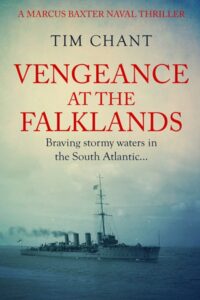
Lieutenant Marcus Baxter is working in the supply department at HM Dockyard Devonport, when word arrives that the German East Asia Squadron has destroyed a British squadron at the battle of Coronel.
Baxter seizes an opportunity to impress the First Sea Lord, Jackie Fisher, during a snap inspection of the dockyard and secures an appointment to HMS Astute, a scout cruiser, which is being sent to join the squadron in the South Atlantic.
Surviving a storm in the mid-Atlantic, Astute has a run-in with a mysterious passenger liner sailing under the Stars and Stripes, and duels with a German light cruiser stalking the rich hunting grounds off the South American coast.
After an intense engagement, which sees the Astute fleeing along the coast to Montevideo for emergency repairs, Baxter once again encounters the suspicious liner. And this time he is determined not to let it get away.
Baxter risks everything to sneak aboard, and makes a shocking discovery. He needs to reach the safety of the Falklands before any intelligence falls into the wrong hands.
But with the enemy on his tail, the race along the South Atlantic won’t be an easy one…
Congratulations to
Nineteen-year-old Anne of Denmark, Queen of Scotland, is thrilled and triumphant at the birth of a healthy baby boy, destined to reign as King of Scotland and, possibly, England.
But Anne’s enjoyment of maternal glory quickly fades as her husband King James, fearing his son will be politically manipulated against him as he was against his mother, the deceased Mary Queen of Scots, removes the child permanently from her care.
Outraged, Anne tries to regain control of her son, initiating a bitter marital struggle which sours what had been a loving and harmonious marriage.
Anne is haunted by the giant legacies of Mary Stuart and Elizabeth Tudor on the thrones of Scotland and England, and is determined to make her own mark.
And central to that ambition is securing the succession to the English throne from her husband’s cousin, the elderly and childless Queen Elizabeth.
Can Anne regain favour with the Scottish King? Will they join forces to secure the English throne?
Or will this daring Queen of Scotland fade into obscurity…?
We are thrilled to announce that we have signed the fifth book in The Marwood Family Tudor Saga by Amy Licence.
Set at the court of King Henry VIII, the series follows the drama and intrigue at the heart of the Tudor court.
In Amy’s words:
“I’m really excited to be publishing the next instalment in Thomasin Marwood’s journey with Sapere Books. Readers of the series will recall her turbulent experiences at the court of Henry VIII in the 1520s. The young Thomasin arrived aged seventeen, fresh from her Suffolk childhood, to navigate the various intrigues and romances of court life. She is dazzled by the elegance of Anne Boleyn, before she finds a place in the household of Catherine of Aragon. Watching the royal marriage unravel, Thomasin becomes close to her mistress, who trusts her implicitly, whilst trying to protect her own heart from the handsome Rafe Danvers and other suitors.
“Now, two years later, the eagerly anticipated Legatine Court is about to open at Blackfriars, to test the validity of Henry and Catherine’s marriage and hopefully bring them all some resolution. Not all is as straightforward as it seems, though, as friends and lovers just as quickly turn into enemies, and long-term scandals in the Marwood family threaten to re-surface. Then there is Thomas Cromwell, keen to do Henry’s bidding, leading to some dangerous clashes with Thomasin’s father.
“I love writing the Marwood series, with all the colour, textures and details of life at the Tudor court. It’s the closest we can come to travelling back in time there ourselves. When I was planning this series, I wanted to create a heroine outside the cast of usual characters, a complete outsider with whom the reader could identify, and set her within the dynamic of known individuals like Anne Boleyn and Catherine of Aragon. There must have been many similar silent witnesses to the crucial events of the 1520s who have gone unnamed and unrecorded, so Thomasin also represents them.
“There’ll be some twists and turns in this book, but it’s building towards a mid-series mini-conclusion, with both Thomasin and her cousin Ellen settled by the end. I thought it time to give them both some happiness at last, after everything they’ve been through. After that, I hope to give Thomasin a little breathing space, then bring her back to court in 1532, for Book Six. She will find herself at Anne’s side through the coming years, as a witness to her queenship and downfall.”
To keep up to date with Amy’s latest releases, visit her website.
The Marwood Family Tudor Saga:
Air Commodore Roderick Chisholm, CBE, DSO, DFC & Bar (1911–1994), author of Cover of Darkness, was a night fighter pilot, flying ace and a highly decorated British airman of the Second World War. To commemorate the eightieth anniversary of the end of the Second World War, his son Julian reflects on his father’s life in 1945.
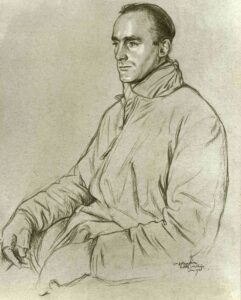
Roderick Aeneas Chisholm by Sir William Rothenstein. Image used with permission from Museums Sheffield
In 1930 Roderick Chisholm joined 604 Squadron of the Royal Auxiliary Air Force. He learnt to fly and was commissioned as an officer. He left the squadron in 1935 when his work took him to Iran. Before rejoining his squadron in late June 1940, he took a refresher course to become a night fighter pilot and fly the squadron’s Blenheims. During the war, while flying Beaufighters and Mosquitos, he shot down nine enemy aircraft with the assistance of his airborne observers and the ground controllers, he commanded the Night Fighter Interception Unit at Ford, and was the second-in-command of Bomber Command’s 100 Group, which was charged with defending RAF bombers over enemy territory. He recorded his wartime experiences in Cover of Darkness, which was first published in 1953.
Immediately after hostilities ended, Roderick led a team of twelve charged with gaining as much intelligence as possible about the impact of 100 Group’s radar-assisted night fighters, Mosquitos, and Radio Counter Measures. The team did their work at the final base of the Luftwaffe in Schleswig, just before it was disbanded and its personnel transferred to POW camps. They carried out interrogations of Luftwaffe night fighter commanders and pilots, observers, flight controllers and technicians, held technical discussions, and examined the vast number of German aircraft parked on the airfields. The team gained confirmation of the effectiveness of 100 Group’s efforts, and had the satisfaction that as a result RAF losses were significantly reduced. The Mosquito had an awesome reputation amongst the German airmen.
 Major Schnauffer was one of the pilots whose interrogation Roderick witnessed. Schnauffer was a brave and skilful night fighter pilot who was credited with shooting down no less than 124 bombers in defence of his country. He wore uniform, and on the last day the Germans were allowed to wear medals, he wore the highest order of the Iron Cross around his neck. The exchanges with the Germans were generally civilised and friendly, but my father could not ignore that they were Nazis, and that nearby were camps for Russian prisoners living in ghastly conditions, and mini-Belsens for Jews and other displaced persons.
Major Schnauffer was one of the pilots whose interrogation Roderick witnessed. Schnauffer was a brave and skilful night fighter pilot who was credited with shooting down no less than 124 bombers in defence of his country. He wore uniform, and on the last day the Germans were allowed to wear medals, he wore the highest order of the Iron Cross around his neck. The exchanges with the Germans were generally civilised and friendly, but my father could not ignore that they were Nazis, and that nearby were camps for Russian prisoners living in ghastly conditions, and mini-Belsens for Jews and other displaced persons.
Roderick’s mission complete, he flew back to Norfolk. While doing so, he envisioned a future Europe in which frontiers would mean no more and individual nationalities were less important, as per the multi-national squadrons of the Battle of Britain. After the collapse of France in 1940, British, French, Belgian, Czech, Polish and other nationalities had flown in harmony in polyglot fighter squadrons. Their aims were identical, and their understanding effective thanks to the basic English of the radio. Sadly, later, as national squadrons were formed, national identities asserted themselves and the unity achieved in the Battle of Britain became compromised.
Major-General Hubert Essame, CBE, DSO, MC (1896–1976) was a British Army officer who fought in the First and Second World Wars. Following his retirement from the army, Hubert lectured in military history at King’s College London, and published several books and articles. He was also an advisor to television producers for military programmes. To commemorate the eightieth anniversary of the end of the Second World War, his granddaughter Antonia shares her memories of him below.
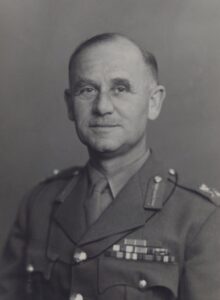
Hubert Essame
Brigadier, later Major-General, Hubert Essame led 214 Independent Infantry Brigade, part of 43rd Wessex Division, in the capture of Mont Pincon, the key to Normandy, as well as of Hill 112, the successful yet most costly single battalion action of the Overlord campaign.
He was a sharp-witted and determined man remembered by the actor and raconteur Dirk Bogarde, his one-time liaison officer, for his “brilliant blue eyes and tongue like a whip”. He had a caustic sense of humour and was a formidable leader from the front.
Soon after the war, Hubert wrote the Division’s official history, The 43rd Wessex Division at War, 1944-45, and later Battle for Normandy, Normandy Bridgehead, The Battle for Germany, and a biography of General Patton. His perspective as a leader of troops into battle, alongside his use of a wide-ranging variety of sources as a historian, makes for a great read even for those who know about Operation Overlord.
His 214 Independent Infantry Brigade, which together with 129 and 130 Brigade and their supporting arms formed Major General Ivor Thomas’s 43rd Wessex Division, were in turn part of the XXX Corps commanded by Lieutenant-General Sir Brian Horrocks all the way from Normandy to Bremerhaven.
The Wessex Division story spans the stormy Overlord crossing and later the crucial Battle for Hill 112. This point south-west of Caen was defined by Eberbach, commander of Panzer Group West, as the “pivotal point of the whole position” and it saw the first of the grim battles of attrition immediately following Caen’s fall. The battle involved heavy casualties and tested the 43rd Division against some of the most seasoned German divisions, well dug in and skilfully hidden.
Road and rail lines lay at right angles to the direction of advance. The bocage of tiny, often boggy fields with sunken lanes and thick hedges reduced visibility for artillery and impeded all movement. And it was high summer. Hubert describes vividly how he crawled forward in the August heat to assess Mont Pincon’s southern slopes before its eventual capture by the Division and 8th Armoured Brigade.
Hubert was a writer whose extraordinarily immediate account includes, for example, the information he gained from German prisoners, subsequent revelations about Hitler’s orders to his generals, and his own point of view at the head of 214 Brigade. His perspective sheds light on some of the huge challenges of the campaign, such as that of establishing a key bridgehead over the Seine at Vernon despite the civilian population’s determination to celebrate as though the campaign was already won.
 214 Brigade fought on through northern France and the Netherlands, including Operation Market Garden, and were among the first Allied troops to enter Germany. They played a key part in the turning of the tide in the Reichswald. I am proud that ‘Brigadier Twinkletoes’ was my grandfather and attempt to read across from his high standards of resolve and determination to the greyer demands of the here and now.
214 Brigade fought on through northern France and the Netherlands, including Operation Market Garden, and were among the first Allied troops to enter Germany. They played a key part in the turning of the tide in the Reichswald. I am proud that ‘Brigadier Twinkletoes’ was my grandfather and attempt to read across from his high standards of resolve and determination to the greyer demands of the here and now.
By Hubert Essame:
The Battle for Germany, September 1944-May 1945
Jeremy Howard-Williams DFC (1922–1995), author of Night Intruder, had a distinguished career in the RAF as a night-fighter pilot during the Second World War and was awarded the Distinguished Flying Cross for gallantry. To commemorate the eightieth anniversary of the end of the Second World War, Jeremy’s son, Anthony Inglis Howard-Williams, reflects on the arrival of peace in 1945 and how it influenced his father’s life.

Jeremy Howard-Williams warming up the engines of a clipped wing Spitfire
When peace came to Europe in May 1945, Flight Lieutenant Jeremy Howard-Williams DFC was stationed at HQ, 11 Group Uxbridge. Three days before Germany’s unconditional surrender, a party was held to celebrate peace. Jeremy and his brother Peter did so by marching a guest — Flight Lieutenant Andrew from RAF Intelligence — between them up and down an anteroom. The junior flight lieutenant just happened to have been their pre-war boarding school housemaster, and the brothers had found it too good an opportunity to miss. When, years later, he was asked how the lieutenant had taken the ribbing, Jeremy replied, “with remarkable good humour!”
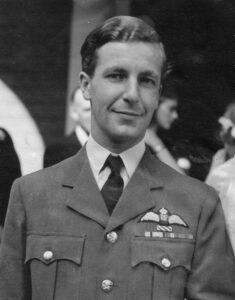
Jeremy at his wedding in 1951
Like so many in 1945, Jeremy was headed for an uncertain future. With peace came the pressing question: what happens now? For most, life outside of the forces beckoned. With millions demobilising, the assimilation of those who had been at war back into civilian society became one of the new post-war government’s biggest challenges. For those who did not want to leave the forces came a different challenge. With Jeremy’s father a retired RAF pilot, Peter a Battle of Britain day-fighter pilot and Jeremy a night-fighter pilot with the Fighter Interception Unit — an elite force at the forefront of the RAF’s early experiments with radar equipment — both brothers understandably wished to remain serving.
With the Royal Air Force downsizing, deployment meant less flying — not a very exciting prospect for a twenty-three-year-old war veteran. Jeremy had specifically joined the RAF in order to fly when the Nazis had tried to seize control of Western Europe. However, in the new modern era of the jet engine, aircraft were flying ever faster and higher. Now that was exciting!
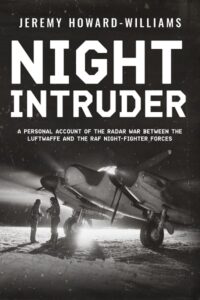 In the end, both brothers remained in the RAF. Jeremy was first posted in an admin job to Singapore during the Malayan Emergency, where he met his wife, uniting two distinguished RAF families. He later worked as an assistant air attaché in the Paris and Berlin embassies. He did fly during these postings, but mainly a desk. He resigned in 1957.
In the end, both brothers remained in the RAF. Jeremy was first posted in an admin job to Singapore during the Malayan Emergency, where he met his wife, uniting two distinguished RAF families. He later worked as an assistant air attaché in the Paris and Berlin embassies. He did fly during these postings, but mainly a desk. He resigned in 1957.
Ultimately, Jeremy’s parents divorced and his father remarried into the Ratsey family, where Jeremy became sales manager for the famous sail-making firm Ratsey & Lapthorn in Cowes on the Isle of Wight. After leaving the company, he wrote many authoritative books on sailing, as well as Night Intruder, republished by Sapere Books, a personal account of his wartime service as a pilot and the radar war between the RAF and Luftwaffe night-fighter forces.
Sir Frank Whittle, author of Jet: The Story of a Pioneer, was a Royal Air Force pilot and aviation engineer known as the inventor of the jet engine. He obtained his first patent for a turbo-jet engine in 1930, and in 1936 co-founded Power Jets Ltd. In May 1941, his engine was fitted to a Gloster E.28/39 airframe — the plane’s maiden flight from RAF Cranwell in Lincolnshire heralded the beginning of the jet age. Frank retired from the RAF in 1948 with the rank of air commodore, and that same year he was knighted. He was awarded the Order of Merit in 1986. To commemorate the eightieth anniversary of the end of World War Two, his son Ian reflects on Sir Frank’s life in 1945.
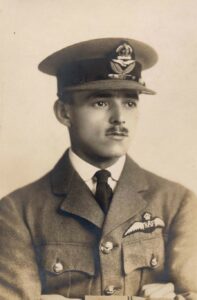
Frank as a junior officer in 1929, when he proposed the turbojet
My father’s company, Power Jets, was nationalised in 1944. From then until 1946, he was on the board of the government company that emerged under a slightly different name. At the time, he was working on the design for the aft-fan engine that also incorporated the after-burner system he had patented in 1936 — the modified W2/700. This was expected to propel the experimental Miles aircraft (M52) intended to be the first in the world to go supersonic. He was also working on the development of what would have been the world’s first hi-bypass turbo-fan engine — the LR1. Both projects were cancelled by the government in 1946 — as was the M52. These decisions resulted in Frank resigning from the board and putting himself in the hands of the RAF to do whatever they would wish him to do.
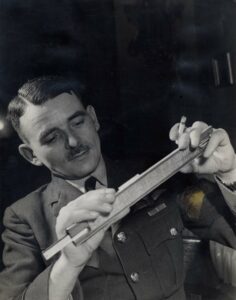
Frank holding his slide rule
1945 was a year of change for my father. He was still a serving officer in the RAF, but Power Jets had become publicly owned and entirely dependent on government funding. He found himself subject to the needs of the large independent aero-engine manufacturers who objected to a government company in competition. However, on three occasions he briefly got away from it all and flew the Meteor jet fighter. Apart from the Wright brothers, he was the first person to pilot an aeroplane powered by an engine of his own design. At other times, he found himself sent off to deliver lectures at various venues to describe the impact and differences when changing from piston engine/propeller propulsion to jet propulsion.
As a little boy, I remember him coming home after flying the Meteor along the high-speed run at Herne Bay. “How fast did you go, Daddy?” I asked. “Oh, about 450,” he replied. “Is that all?” I said with some disgust, and turned away to do whatever it was that I was doing. I had expected him to tell me 600 miles per hour. When I asked him about this, many years later, he said he was quite crestfallen by my reaction. He also explained that, as he was flying at about 50 feet above the surface of the sea, he really was unable to pay much attention to his airspeed indicator — his attention was focussed on keeping the aeroplane steady and level. And anyway, he would have been speaking of knots, not mph!
Featured image credit: Photo of Gloster Meteor by Alexis Threlfall on Unsplash.
Sir Peter Gretton DSO** OBE DSC (1912–1992) was an officer in the Royal Navy. He was active in the Battle of the Atlantic during the Second World War, and was a successful convoy escort commander. He eventually rose to become Fifth Sea Lord and retired as a Vice-Admiral before entering university life as a bursar and academic. To commemorate the eightieth anniversary of the end of World War Two, Sir Peter’s son, Vice-Admiral Mike Gretton, shares his memories of him below.
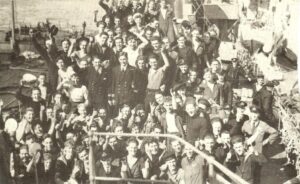
Lieutenant Commander Peter Gretton with the Ship’s Company of HMS Wolverine
On 8 May 1945 — Victory in Europe Day — Peter Gretton was thirty-three years old and utterly exhausted. He had been continuously in seagoing appointments since the outbreak of war in September 1939. He had married Wren Judy Du Vivier in 1943 during a short break between convoys, and they had had their first child, Anne, who was not yet one year old. They were renting a flat in Kensington so that he could readily get to work: his job at the time was in the Joint Planning Staff in the Cabinet Office working on strategic plans to end the war in Europe and then in the Far East — not exactly a rest cure.
Peter had served continuously in seagoing ships from September 1939 until he came ashore in March 1944 — still only thirty-one years old. He had served in five ships during that time, starting as a First Lieutenant, including HMS Cossack in which he was mentioned in Dispatches for his performance during the Second Battle of Narvik under the very demanding Captain Philip Vian VC. From February 1941, he was in command of destroyers, starting with HMS Sabre in which he was awarded an OBE, and then HMS Wolverine (March to November 1942) when his ship was an escort for Operation Pedestal, the relief of Malta. He was awarded his first DSO for ramming and sinking an Italian submarine at the expense of wrecking his bows and having to proceed astern to port at Gibraltar.
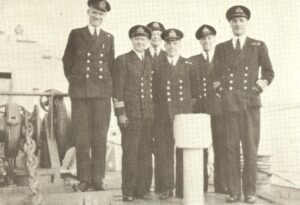
Commander Peter Gretton with the Commanding Officers of ships in B7 Escort Group
From there, he was recalled to the UK as a Commander to become the Senior Officer of Escort Group B7, to be based in Derry, and he initially embarked on HMS Duncan. The Escort Group supported Atlantic convoys for two years and five months. He was awarded the two bars to his DSO during that time, the first of which reflected the successful battle for convoy ONS5, which historians regard as the tipping point in Allied fortunes in the Atlantic convoy campaign.
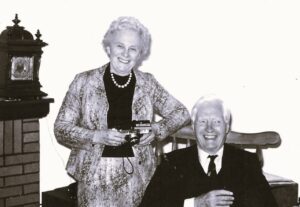
Peter with wife Judy in 1965
In March 1944, Peter dedicated himself to writing a new book — The Admiralty Convoy Instructions — based on his and others’ experience at war, with a readership in the Royal Navy, Royal Air Force and Merchant Navy. This became the bible for convoy protection and the same book, with minor amendments, was the basis of my own training as a naval officer in the 1970s.
Peter and my mother rejoiced exuberantly at the victory in Europe: he writes that they ‘walked up Picadilly and thence to St James’ Park … remarkable scenes’. They would have reflected proudly on their own contribution to the outcome: my father at sea and my mother as a Wren in the Western Approaches Tactical Unit (WATU), which developed and taught tactics for the Atlantic battle. I was born nine months after VE Day, in March 1946.
By Peter Gretton:
Congratulations to David Mackenzie, whose wartime aviation thriller, Spitfires Rising, is published today.
Spitfires Rising is the first book in the John Noble Fighter Ace Thrillers: action-packed military adventures following an RAF pilot during the Second World War.
1938
Having been raised on a farm, young New Zealander John Noble longs for an adventure away from his family’s homestead.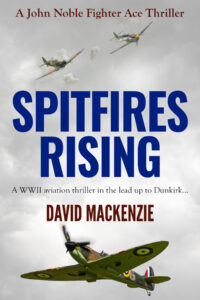
Enthralled by the sight of a Tiger Moth flying overhead, he decides to pursue a career as an RAF pilot and travels to the United Kingdom to complete his training.
After receiving his Wings, John is sent to RAF Catterick, where he finds himself flying the formidable Spitfire.
When tensions in Europe reach breaking point and Britain declares war on Germany, John’s training and courage are put to the ultimate test.
As the squadron prepares to face the Luftwaffe, John starts to question the effectiveness of their tactics, leading to clashes with senior officers.
And as his missions grow ever more dangerous, John begins to wonder just how far he will go to survive the war…
Is John ready for battle? Will he be able to follow orders while preserving his life?
Or is he destined to become a casualty of war…?
We are thrilled to announce that we have signed a new historical mystery series set in eighteenth-century France by Cheryl Sawyer.
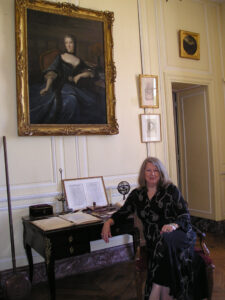
Cheryl Sawyer at the Château de Breteuil with a contemporary portrait of Émilie du Châtelet
In Cheryl’s words:
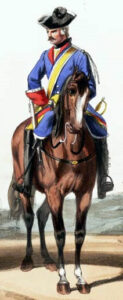
A cavalier of the Maréchaussée, the French military police, in the early 1700s
“It’s 1735 in the remote Champagne province and a cavalier in France’s mounted police force must investigate a murder at the chateau of Cirey, where the scandalous Marquise du Châtelet is sheltering Voltaire. How could a lower-class gendarme solve major crime in a society where aristocrats held all the power?
“That very question sprang to mind when I visited beautiful, secluded Cirey during my research into Émilie du Châtelet, a brilliant physicist of the Enlightenment. A lone military policeman would struggle to do his duty in this privileged locale, even if Voltaire himself were a likely suspect.
“That is how Victor Constant and his first challenging investigation came to life. I had eight historical novels published in several languages, but this was my first crime story and I sought seasoned opinion. Peter Lovesey wrote to me: ‘Marvellous tensions between the great free-thinker and Victor Constant, the book’s hero. The story dazzles and beguiles and the setting is pitch-perfect.’ The novel went on to be longlisted for awards by the Historical Novel Society and the American Library in Paris, and readers have since called Victor ‘the Jack Reacher of the eighteenth century’.
“I am delighted that Sapere Books have chosen Murder at Cirey to lead this series and thrilled that Victor Constant persists in battling injustice within the rigid society of the Champagne. The new titles are Death in Champagne and Murder on High. A huge thank you to the Sapere team for launching this adventurous series!”
Congratulations to David Field, whose twisty Victorian thriller, The Retirement Murder, is out now!
The Retirement Murder is the ninth instalment in the Esther and Jack Enright Mystery Series – a traditional British detective series set in Victorian London and packed full of suspense.
London, 1898
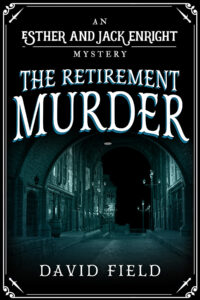
The time has finally come for Percy Enright to retire from Scotland Yard. His nephew, Jack, is sad to lose a partner in the force, but Jack’s wife Esther is glad Percy won’t be getting her husband into any further scrapes.
It seems Esther’s relief might be short lived, though, when a senior officer collapses at Percy’s farewell ceremony.
It soon becomes clear that the officer was poisoned, and Percy delays retirement to help Jack track down the culprit.
It’s a daunting task that involves trawling through all the murdered officer’s recent cases in the search for someone who may still bear him a grudge.
But when it becomes clear the dead man may not have been the intended target, the investigation suddenly turns in a new direction.
Why are the police being targeted? Can Percy make one final arrest before he retires?
Or will the murderer outwit the Enrights in their latest case…?
Following the success of his many historical series, including the Sandal Castle Medieval Thrillers and Inspector Torquil McKinnon Mystery Series, we are delighted to announce that we have signed a new supernatural series set in Victorian London by Keith Moray.
In Keith’s words:
“The first book in the series is set in London in 1854. Jack Moon is a foundling, brought up in an orphanage and then a workhouse, where he and his best friend Danny are subject to regular beatings. Together they escape, but when Danny dies in tragic circumstances, Jack secretly buries his friend in a cemetery at night.
“Alone and living in a deserted and rat-infested warehouse, Jack starts seeing Danny’s ghost, who warns him that someone is out to kill him and worse, the girl he loves, too. This is Victorian London, with its criminal underworld, body-snatchers, phrenologists, séances, ghosts and ghouls.
“I am delighted to be writing another historical series with Sapere Books, who have permitted me to set my stories in a variety of times and places, from ancient Egypt and medieval England to a contemporary Scottish island. My new mystery series delves into the occult and the psyche of the Victorian mind. It is murky, sinister and just a little bit scary.
“And one of the main characters is a ghost.”
Following the success of his many military thrillers, including the Vietnam Ground Zero Series and Wings Over Nam aviation thrillers, we are delighted to announce that we have signed a new historical military series by Eric Helm.
In Eric’s words:
“At the end of the 1980s and at the beginning of the 1990s, the world moved close to a world war that could easily escalate into a thermonuclear exchange that would end modern civilization. There were those who wished for nothing more because they believed it would thrust them to the top and in control of the world. And there were those who wanted to prevent that. Their purpose wasn’t always altruistic, but that goal matched their own climb to power. It is into this world that the characters in this series move, serving on every continent and sailing all the oceans, dealing with those problems.
“The characters are military and civilian, members of the media, and those with an academic frame of mind. Each brings an interesting take to the problems of trying to prevent a world war, except for one nation whose leaders believe such a conflict would benefit them. These are unique situations that require unique solutions. This is a tale told on the world stage with players at nearly every level of society.
“Sapere Books have been very good to me. The packaging of my Vietnam Ground Zero series has been perfect. The enthusiasm with which the books have been received has been wonderful. Sapere is a great publisher who have looked out for my best interests. Everyone seems to be excited by the various projects that I have suggested and there is no pressure to crank out a book quickly. They let it evolve naturally, which I believe makes the books that much better.”
Congratulations to D. R. Bailey, whose thrilling aviation novel, The Night Angels, is published today!
The Night Angels is the second novel in the Secret Sirens Aviation Thrillers Series, heart-pounding Second World War escapades with strong female leads.
1943
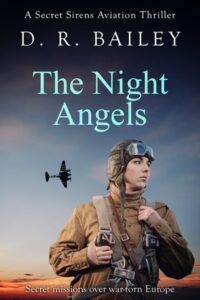
Sisters Anna and Jennifer Nightingale are recruits in the top-secret Siren Squadron: a group of women trained in the RAF to fight against the enemy.
The Sirens are tasked with flying a series of night stealth missions as part of Operation Scorpion. The first mission is successful, and on returning to base they are told that new members will be joining their ranks.
Hopeful that this means the all-female squadron has been deemed a success, the sisters welcome the new recruits and start training them on the Mosquitos.
They head out on another night mission. But this time not everyone returns.
With a downed plane found empty off the English coast, fears grow that one of the Sirens hasn’t survived.
But the show must go on. And Anna Nightingale has to destroy the crashed plane so the Sirens can remain classified.
As their night missions continue, increased skirmishes with enemy pilots suggest someone may be leaking information to the Germans.
Have the Sirens been compromised? Can they find the mole?
Or will these daring female agents be forced out of the war…?
Congratulations to Angela Ranson, whose gripping Tudor mystery, A Glittering Peril, is out now!
A Glittering Peril is the third book in the Catrin Surovell Tudor Mysteries Series: exciting historical thrillers set at the court of Elizabeth I.
1561
Every summer, Queen Elizabeth takes a journey around her kingdom. It is a time of revels and celebration, full of pleasure and extravagance.
But in July 1561, the trip begins badly when the corpse of an unknown man is left in her path.
The nervous queen asks Catrin Surovell, her trusted favourite lady-in-waiting, to find out who is trying to sabotage her journey.
But Catrin soon discovers that the queen’s nervousness stems from something greater than the mysterious death.
Someone has been leaving reminders of the queen’s mother, Anne Boleyn, in strange places. A woman appears in the distance who looks like her; the scent of Anne’s perfume is left in the queen’s chamber, and Anne’s favourite French ballads are sung by a disembodied voice as the queen is travelling.
Worst of all, Anne Boleyn’s famous gold-and-pearl necklace with teardrop pearls hanging from a letter ‘B’ is taken from the queen’s bedchamber. The queen is devastated by the loss, for the necklace was one of very few mementos she had of her mother.
The queen begins to suspect one of her courtiers, so Catrin visits his home to conduct a secret investigation into his actions. And that’s when she discovers this is the most difficult mystery she has ever had to solve.
Is Queen Elizabeth being haunted by her ill-fated mother? Or is someone trying to drive her insane?
And can Catrin find the connection between the missing jewels and the unknown corpse…?
Following the success of her Kit Scarlett Tudor Mysteries and Shadow Cutpurses Tudor Thriller Series, we are delighted to announce that we have signed a new series set in Shakespearean England by Adele Jordan.
In Adele’s words:

Adele Jordan
“It’s 1591 and the actor starring in a play by newcomer playwright, William Shakespeare, has just been murdered, shot with an arrow on stage in the middle of a performance. When suspicions fall on the woman in charge of makeup and wig-making, Blanche Winspear must fight to prove her innocence.
“In my new series, I delve into a part of Tudor England that has always fascinated me. At university, I studied the rise of Tudor theatre — both the buildings and the plays — and how they evolved into Jacobean theatre. There’s an enduring fascination for this period thanks to Shakespeare’s enigmatic success, but how much do we really know about what went on behind the stage? It struck me that there is the potential for so much to happen in these buildings that started out as inns and bear-baiting pits, before they took their first steps towards becoming the theatres we would recognise today.
“This new story will focus on Blanche and her grandmother Nell, two people running from their past who have come to hide in this dramatic world. There will be secrets, lies, and the world of Elizabethan theatre played out both on stage and behind. The royal court, known for its love of theatre, will appear too, and keep an eye out for intriguing real-life people who will become characters in this series
“I am delighted to sign this new series with Sapere Books. Having worked as a ghostwriter for some years, Sapere were kind enough to give me my first book deal in my own name and since then have supported me in pursuing historical crime fiction with women at the centre to root for. A huge thank you to the team for supporting me in my next series!”
We are thrilled to announce that we have signed the first three books in Kristi Ross’ new Scottish Queens series.

Kristi Ross with Bolt
In Kristi’s words:
“My new series brings to life the untold stories of Scotland’s Stuart queens. While the histories of queens in England, France, and much of Europe are well documented, these Scottish queens have been mainly forgotten — until now.
“In this series, readers will explore the compelling journey of Queen Joan Beaufort, niece of King Henry IV and cousin to King Henry V, who enters Scotland as the wife of King James Stuart I after he was held prisoner by her English family for eighteen years. Her tale is one of true love, resilience, and determination as she navigates her husband’s assassination, becoming the first dowager queen of Scotland in over a hundred years.
“We also delve into the story of Queen Euphemia Ross, whose life begins as King Robert Bruce I’s ends. Her rise from noblewoman to queen consort is a testament to the position of pawn that high-ranking women played. As the second wife of King Robert Stuart II, Euphemia constantly defends her children’s succession rights against rivals and navigates the complex dynamics of her husband’s family. Readers will also meet her daughter-in-law, Queen Annabella, born into the powerful Drummond clan and niece to King David Bruce II’s second wife, Queen Margaret Drummond. Annabella takes the reins of the kingdom when her husband, King Robert Stuart III, is incapacitated, showcasing her leadership and strength in crisis.
“Working with Sapere Books is a perfect match, as their commitment to historical fiction and their passion for bringing forgotten stories to light resonates deeply with me. These women had little control over their destinies, yet their strength and adaptability are fascinating. It drives me to tell the world their stories so that their legacies are remembered.”
The third Sapere Books’ Writers’ Retreat took place at The Priest House Hotel, Castle Donington between the 28th and 31st of October this year.
Adele Jordan, author of the Kit Scarlett Tudor Mysteries and the Shadow Cutpurses Tudor Thriller Series, helped to organise a full programme over the four days.
In Adele’s words:
“For a lot of writers, it’s a solitary world. Whether you are struggling to complete your manuscript or are in love with your story and find it hard to step away, it can’t be denied that for many writers a lot of time is spent in a staring contest with your computer screen, and sometimes we need to step away from that screen.
“For the last three years, a group of authors from Sapere Books have come together to create their own writing retreat, and this year saw our biggest yet. Fourteen authors, who write across various historical genres, came together to talk about all things writing.

Photo of The Priest House Hotel by Andy Stephenson, used under the Creative Commons Licence
“From romance to crime, we plundered the depths — from the importance of accuracy in military fiction, to how we plan and approach clue-filled detective stories. What transpired was not only a shared enthusiasm for our craft, but the reassurance we sometimes need that we are not alone — that there are others out there with the same passion who are keen to inspire and be inspired themselves.
“This year, we had some special sessions led by writers in the group. Highlights included an insightful look into the editing process by Neil Denby, author of the Quintus Roman Thrillers Series, and a debate on the accurate use of poisons in fiction and the importance of research by Linda Stratmann, author of The Early Casebook of Sherlock Holmes Series.

Adele Jordan
“Amy Durant, Sapere Books’ Publishing Director, led a popular Q&A session with authors attending the retreat. We also covered what makes a good title, how to grab your reader’s attention from the very first line, the complications around weaving a narrative with more than one viewpoint, and a friendly critique session where people were invited to bring their own work for discussion.
“Following inspiring chats, some political debates, good food and a very comfortable bar, I was delighted to see so many of the writers come away with big smiles on their faces. Thank you to everyone who came this year and to Amy Durant too for sparing the time to talk to us. Here’s hoping next year’s Writers’ Retreat is not only just as good, but the biggest and best yet!”
Some comments from the attendees:
Ros Rendle, author of The Strong Family Historical Saga and the Moondreams House Romances: ‘Thanks to all attendees at the authors’ retreat week for making it so useful and fun. Particular thanks to Adele Jordan for all the organising, the excellent programme and for keeping us on track with such diplomacy.’
Michael Fowler, author of the DS Hunter Kerr Investigations and Dr Hamlet Mottrell Investigations: ‘[The retreat] has turned the plot of my next book completely around. And it was nice to catch up with colleagues from previous retreats, as well as meet up with new ones.’
Linda Stratmann, author of The Early Casebook of Sherlock Holmes Series: ‘The sessions really stimulated the little grey cells of the brain, and I got some insights which had me rushing off to do some writing!’
C V Chauhan, author of the Inspector Sharma Thrillers Series: ‘It was a fantastic four days! Thanks everyone and a big thank you to Adele for leading and managing the four days so well.’
We are thrilled to announce that we have signed three new instalments in the Tom Walsingham Mysteries Series by C.P. Giuliani.
The series follows the espionage adventures of Tom Walsingham during the Elizabethan era in Tudor England.
In C.P. Giuliani’s words:
“Tom Walsingham sleuths on! I’m thrilled to have signed up three more adventures featuring my Elizabethan detective and spy with Sapere Books. I have great plans for Tom. He will be tasked with recovering a misplaced foreign ambassador — whose mission could change the course of Anglo-Spanish relations; he’ll become involved in a personal investigation when death strikes at his family home, Scadbury Manor; and poor Tom will find himself in prison when his money troubles and Sir Francis Walsingham’s plans collide. Plenty of mysteries and dangers lie ahead for Tom!
“I’m really happy to be working with Sapere, whose welcoming and stimulating atmosphere and competent, friendly and helpful team have made (and are making) my publishing journey a truly lovely adventure.”
Following the success of his DS Hunter Kerr Investigations and Dr Hamlet Mottrell Investigations, we are delighted to announce that we have signed a new historical police procedural series by Michael Fowler.
In Michael’s words:
“My new series features Detective Winter Cooper of Scotland Yard and is set in the 1950s.
“Detective Cooper’s first case is based upon a real event, the Eastcastle Street robbery — Britain’s biggest cash-in-transit hold-up at the time. In May 1952, robbers used two cars to sandwich a Post Office van in London and escaped with mailbags containing £287,000 (estimated to be worth approximately £8,500,000 today). It was a case that shocked the nation and embarrassed the Government, with Prime Minister Winston Churchill demanding daily updates from the Police Commissioner. Despite the involvement of over a thousand police officers, and the offer of a £25,000 reward, no one was ever caught.
“This is my take on that case, and while it is a deviation from my contemporary novels, I hope readers will embrace Winter Cooper with the same enthusiasm that I have put into creating him and this new series.
“Working with Sapere Books again was an easy decision to make. Over the past five years, they have given me so much support as a writer and I cannot thank them enough. When I ran the idea of this new series past them, their backing was unflinching.”
In this behind-the-scenes blog series, Sapere Books authors offer an intriguing insight into how, where and why they write.
Today, we are delighted to spotlight Valerie Holmes, author of the Yorkshire Saga Series.

Valerie’s study.
Staring out of my study window I see a brick wall. Not a theoretical one that means I have writer’s block, which I do not actually believe in as a professional writer, but a literal brick wall.
This may not appear to be the most inspirational of vistas, but I am fine with it.
Inside my study I am surrounded by my writing workspace; my research books, my trusty printer and personal items that make me smile.
Centre stage is my lovely laptop with its two screens. One is usually displaying research sites and email tabs, the other Word documents — my current WIP.

Castleton Walk, Commondale.
The brick wall rarely gets a glance because, once my laptop is on, I dive into my inner vistas. The beautiful scenery of North Yorkshire’s open moorland and coastline with its sweeping bays and rugged headlands. These are the settings against which my romantic adventures play out. Hence the Yorkshire Saga Series and my many novellas.
It is a world I am familiar with because I grew up in a bay town on the northeast coast and have happy memories of running with my dog along the open expanses of fine sandy beach, climbing the dunes which were covered with needle-sharp marram grass.

Gisborough Priory.
The area is steeped in history, from the old abbeys and market towns to the beautiful city of York. I still return regularly to explore the area: the monk’s trods that cross the moorland, the fishermen’s cottages that line the harbours and the old inns of the bay towns such as Whitby, Staithes and Robin Hood’s Bay. Then there are the manor houses and halls, each with a story to tell — inspiration for my next adventure is found in all. The darker era of smuggling provides further scope to add drama and menace.
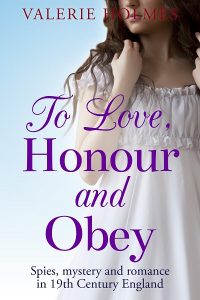 The beauty of having a laptop is that it is mobile. I have written in cafés, on trains, on picnic tables by the sea, and in hotels — but the real work, the editing, polishing and research, happens at my desk, ignoring the blank brick wall.
The beauty of having a laptop is that it is mobile. I have written in cafés, on trains, on picnic tables by the sea, and in hotels — but the real work, the editing, polishing and research, happens at my desk, ignoring the blank brick wall.
I have a flexible routine, writing every day. Life happens, events happen, but the one thing that is constant is the desire to write, which never goes away — or not yet — and I hope never will so long as readers enjoy my adventures.
What better motivation is there for an author to continue to write?
In this behind-the-scenes blog series, Sapere Books authors offer an intriguing insight into how, where and why they write.
Today, we are delighted to spotlight Daniel Colter, author of the Knights Templar Thriller Series.
Writers are a strange breed.

The view from Daniel’s window
We invent friends in our heads, decide how they speak, what they wear, where they go, then spend countless hours conversing with them. No two writers share the same head-friends, oddly, despite running in the same social circles. Neither do any two writers develop a story the same way.
Specific routines keep us on track, or don’t (looking at you, internet), and each work proceeds at its own pace. Most writers are one of two species: a plotter or a pantser. A plotter maps out each scene, chapter, and verse before putting fingers to keyboard. Pantsers fly by the seat of their pants, beginning with an idea, then writing towards a vaguely defined ending. I mapped out my first novel, Brotherhood of Wolves, but tossed the map aside by chapter 3. I found pantsing more rewarding, and still do, because much of the fun (and frustration) is writing myself into a corner and finding a path out.
My novels are historical fiction, where history provides setting, culture, and place. History can also frame the plot. Story is given precedent over history, however, because the goal is to entertain, not to educate. One or more characters are historical persons and the fictional protagonist lives within their orbit. Historical fiction should stay true to history and the fiction takes flight where history grows murky — which it usually does, especially the further back in time one travels. The murk is where the fun begins, in my opinion, and its where the what if fleshes out the story, where the pantser finds out what happens to his head-friends.
Writers are also strange creatures.
Some writers have habits, like a dog that circles exactly three and a half times before lying down, and these rituals are intended to fuel creativity. Isabel Allende started her first novel on January 8, 1981, and that day became a ceremonial start date for all her subsequent works. The poet Friedrich Schiller kept rotten apples in his desk and, when his mind needed a jolt, he would give one a sniff.
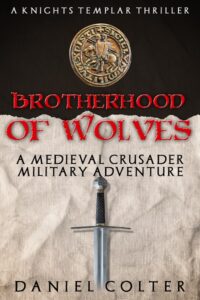 My writing rituals are more mundane and less … smelly. I start with two (not one, not three) cups of coffee. I keep a stuffie of Curious George on my desk, in honour of Curious George Rides a Bike, the first book I read cover-to-cover. I say hello to George each morning.
My writing rituals are more mundane and less … smelly. I start with two (not one, not three) cups of coffee. I keep a stuffie of Curious George on my desk, in honour of Curious George Rides a Bike, the first book I read cover-to-cover. I say hello to George each morning.
Ritual also comes from my father. He was a painter and writer and used a second-hand desk as his art space. I acquired that desk, set to rehabbing it, but foolishly sanded the top to expose wood veneer over composite. I left his dried paint splashes along the edges, though, and I touch them when I write. They make me think of him, and thinking of him puts me in a creative mood. I told him I had begun writing historical fiction, his favourite genre, but he passed away before reading Brotherhood of Wolves. I often wonder what he would think of my series, and suspect he would be pleased (except for the part where I ruined his desk).
In this behind-the-scenes blog series, Sapere Books authors offer an intriguing insight into how, where and why they write.
Today, we are delighted to spotlight contemporary romance author Patricia Caliskan.
I wrote my third novel, When We Were Us, at my bureau, which has become my writing enclave. Something about opening the bureau desktop gives me a sense of immediacy which speeds the writing along. I write upstairs, free from distractions, except for my dogs who stop by to visit, but basically closed off from everything except the world I’m creating.

Patricia’s bureau
I never thought I had any writing rituals until people began asking the question. I realised that I have rituals in general. All three of my novels were largely written at night. Once the demands of the day are over, night-time is not only the perfect fit in a practical sense but allows me the space I need to daydream on behalf of my characters, and fully immerse my thoughts in the world of the book.
I’m a huge advocate of those tiny details which promote wellbeing, even when I’m not writing. So, before I get back to my latest manuscript, I mix essential oils for my diffuser, which works like magic for changing up the mood, and I set a timer to monitor my working hours.
I find having scheduled time slots super helpful. I can show up and do the work and know exactly how much time I’ve spent on the novel, which is reassuring when I’m trying to find enough time to work on a project.
I switch on my moon light, as I call it, a perfect orb of white light, and always freshen up my perfume before I write. I think of perfume as a superpower. A favourite scent signals that we’ve got work to do and someplace else to be.
I usually start by reading over where I left off to reacclimatise. I try not to spend too much time agonising over a word choice or a sentence formation until I’m at the editing stage. I have a natural tendency to edit as I go, wanting the work to be as close to the final manuscript as possible, which can hinder the drafting process.
When it comes to first drafts, I remind myself of my own advice: to just get it all down. I need solitude to do that, and sitting at my bureau, I feel enclosed in the world of the book. When it comes to editing, I usually end up inadvertently making a playlist to score parts of the novel or characters, which I find helpful with tone and pace. Once I have a completed manuscript, I print the work out and read it aloud, because if the writing doesn’t sound right, it isn’t right, and needs reworking.
Writing fiction requires both discipline and detachment, and my little bureau space provides just that!
Congratulations to Eric Helm, whose thrilling Vietnam War adventure, Proxy War, is published today!
Proxy War is the twenty-ninth book in the Vietnam: Ground Zero series: action-packed, authentic historical thrillers set during the Vietnam War.
Republic of Vietnam, 1969
The American government has known for a long time that there were Soviet advisors in North Vietnam, but now it seems they are ready to strike.
Intelligence has been gathered suggesting that Soviet fighter pilots have engaged in aerial combat with American Air Force and Navy pilots.
As of yet the Americans have not retaliated, as the UN is terrified of the Vietnam War escalating into a global nuclear disaster.
But the Soviets have been spotted engaging local Vietnamese troops and it seems they are readying for an attack.
U.S. Army Special Forces Major Mack Gerber and Sergeant Major Anthony Fetterman have been on light duties in Vietnam, during a relatively peaceful period in the war.
But after a visit to a Special Forces Camp, they are told that the enemy have been increasing their assaults on the base.
What are the Soviets planning? How large is their army?
Can the US Special Forces stop their deadly attack…?
In this behind-the-scenes blog series, Sapere Books authors offer an intriguing insight into how, where and why they write.
Today, we are delighted to spotlight C.P. Giuliani, author of the Tom Walsingham Mysteries Series.

C.P Giuliani’s garden house
Every year, as soon as summer comes, I move my writing to the garden house. It’s not really cooler, as temperature goes, but it feels summery and pleasant. I love the tall ceiling, the terracotta floor, the desk that used to belong to my great-grandfather, and the view onto the garden. There’s a little pond outside the French windows, and the birds bathing or drinking are, I confess, something of a distraction — but they also provide a cheerful break whenever I find myself stuck. A paragraph refusing to take the right shape? A character mutinying? A dull passage? I step away from the desk and watch while the blackbirds play in the water — and, more often than not, a solution will suggest itself.
For all its rustic pleasantness, the garden house has decent Wi-Fi — which is rather essential when my pile of reference books is not enough to confirm some detail — and is equipped with an electric kettle to make cup after cup of tea, which is a fundamental of my writing method.
In truth, beyond the insane amounts of tea, I have little in the way of a writing routine. Working in theatre means that my hours are flexible. Sometimes I write in the morning, sometimes very late at night, sometimes both; sometimes I must snatch the odd hour here and there, between a rehearsal session and a meeting with the techs. One thing I do is to always keep a notebook with me. Through the years, I’ve learnt to keep a dedicated notebook for each project, beside a general one for everything and anything: notes, stray ideas, snatches of dialogue overheard or imagined, lists, questions… It’s the general notebook that I carry around, so I can jot down anything that occurs to me — to be transferred to the relevant one later. This means that I do some of my writing at the theatre, at the vet’s, as I stand in a queue at the Post Office…
My family, friends and colleagues have developed a high degree of amused tolerance for my ‘Notebook Moments’, when I drop whatever I’m doing to take a note; strangers are occasionally a little put out until I explain that, for one thing, I’m prone to forgetting what I don’t write down and, for another, sometimes an idea will present itself in a very iridescent shape, little more than a flicker of colour under the surface of the water — and will need to be recorded quickly and thought through in writing, at least a little, if it’s to be of any use.
So to recap, I’m absent-minded, easily distracted, forgetful, and can’t keep a routine… I suppose it’s no wonder that a quiet, pleasant place like the garden house is important to my writing process.
In this behind-the-scenes blog series, Sapere Books authors offer an intriguing insight into how, where and why they write.
Today, we are delighted to spotlight David Field, author of numerous historical series including the Bailiff Mountsorrel Tudor Mystery Series and the New World Nautical Saga Series.
I’ve always written stories, even as a child, then I progressed from childhood scribbles to more serious attempts at literary glory on an old upright Olivetti typewriter (one of those with a red and black ribbon, if you’re old enough to remember) when my handwriting graduated from ‘untidy’ to ‘execrable’.
Reluctantly I then honoured my mother’s wish, and my father’s insistence, and got a ‘real job’ as a criminal trial lawyer, which was about as relaxing as standing on one leg on the top outer ledge of The Shard in London, without the reassurance of a safety harness. To relieve the stress I decided to start working on a novel — but what should I choose for a genre?
A good friend of mine who already earned a precarious living as a novelist was insistent that one should always write about things that one knows, and by this stage I knew two things outside my professional straightjacket — some history from my schooldays, and the streets of my home town, Nottingham. During the final years of my working life I spent stolen moments imagining the lives of those living in Nottingham during the Luddite Riots, and In Ludd’s Name was eventually published by a boutique publishing house owned by an old school friend.
Bitten by the bug, and buoyed up by having finally been published, I grew ambitious, and searched the history books for possible storylines, most notably from that most colourful of periods of English history, the Tudor era. The literary world seemed to be awash with Henry VIII, Anne Boleyn, Elizabeth I and even ‘Bloody Mary’, but two seminal characters from that era seemed never to have received much attention from novelists.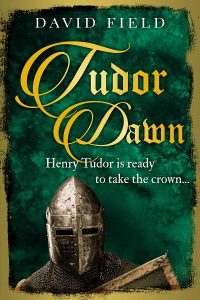
First was the progenitor of the Tudors, the boy from Wales, Henry VII, and I climbed inside his head to bring to the pages that followed his boyhood imprisonment in a bleak castle in South Wales, his youthful exile in Brittany, his triumphant return at the head of a ramshackle army that deposed Richard III at Bosworth, and his love match with Elizabeth of York that brought the Wars of the Roses to an end in the nursery rather than on the battlefield. To my delight, and secret surprise, I found a publisher — Sapere Books — and Tudor Dawn was launched.
Then — unbounded joy and amazement! — Sapere wanted another one, so this time I focused on a butcher’s son from Ipswich who rose from obscurity to become Archbishop of York, Papal Legate for life, Lord Chancellor and the diplomacy coach of choice of Henry VIII. Cardinal Thomas Wolsey’s spectacular downfall was just as dramatic, and The King’s Commoner was published, as testament to the fact that I had a second novel in me.
Dozens of titles have since been published, all by Sapere Books, and all ‘historical’ in genre. As one of the characters in Alan Bennett’s delightful creation, The History Boys, says of history — ‘It’s just one ******* thing after another’, and so it has been for me.
We are delighted to announce that we have signed a new series of historical naval adventures by Daniel Donato.
In Daniel’s words:
“The series follows English privateer Gideon Locke during Queen Anne’s War, which engulfed the colonies from Newfoundland all the way down to the Caribbean. With the Royal Navy tied up back home, it largely fell to privateers to protect the colonies.
“The story begins in 1707 with Gideon newly returned from a disastrous privateering venture, leaving him destitute and shunned by his fellow privateers. His fortunes change, however, when a charismatic captain recruits Gideon on his next venture. But by the time Gideon realizes that change in fortune was for the worse, it’s too late, and he finds himself caught up in a plot to kidnap the son of a prominent English Governor and deliver him to the French.
“As the series progresses, we’ll see Gideon fight to redeem himself, earn a reputation and climb in rank until he’s ultimately in command of his own vessel.
“I was very fortunate to meet Amy Durant at the Historical Novel Society Conference in Texas last year, and even more fortunate that she was interested in this series. It’s a dream come true to be working with a publisher like Sapere Books who understand that there’s quite a hunger out there for historical action and adventure.”
Following the success of her Jane Austen Investigations series, we are thrilled to announce that we have signed a new dual timeline series set in the modern day and Tudor times by Laura Martin.
In Laura’s words:
“I am absolutely delighted to be writing a new dual timeline series for Sapere. With threads of the present day and Tudor times, as well as hints of the occult, the books are fantastically interesting to research and write. In the present day the series follows two friends — Alice and Lydia — whose lives are ripped apart when Lydia suffers a catastrophic accident whilst they are playing with a Ouija board. Alice tries to move on with her life until it becomes apparent Lydia’s condition is linked to an unsolved mystery in the past.
“Vivacious and charming, Bessie Blount is an immediate favourite at court when she joins the household of Queen Katherine of Aragon. With her skill at singing and dancing she soon catches King Henry VIII’s eye and quickly has to learn how to navigate the intrigue and politics at court. When she falls pregnant with the King’s son she begins to wish for a normal life, but the price she has to pay is watching her firstborn son grow up from afar. She cannot guide Henry Fitzroy through the dangerous world of the Tudor court, and cannot stop worrying about her eldest son’s safety.
“The happenings of the present day and the Tudor times are inextricably linked and only by unravelling the mysteries of the past can Alice have any chance of saving her friend.
“I am thrilled to be working with Sapere again on this new series. The whole team are wonderful to work with and have a way of making the complicated process of producing a book appear seamless.”
In the Jane Austen Investigations series:
We are thrilled to announce that we have signed a new series of Ancient Rome novels by Alistair Tosh.
Alistair is the author of the Edge of Empire series — gripping adventures set in the tumultuous Roman Britain of the second century AD.
In Alistair’s words:
“My new series takes place during the Second Punic War (218–201 BC) between Carthage and the Roman republic in the important theatre of Iberia (Spain/Portugal). It focuses on the lives of two historic figures: Hasdrubal Barca (Carthage) the younger brother of the legendary Hannibal and Gnaeus Cornelius Scipio (Rome), uncle of the famous Scipio Africanus. The novels will follow the ebb and flow of their lives and fortunes as their armies struggle for dominance of the land and its warring tribes.
“I discovered the stories of Hasdrubal and Gnaeus quite by accident. Last year I spent several months in Andalusia, Spain and was seeking a subject for a magazine article to aid with the marketing of my most recent trilogy. I thought of writing something about Rome’s impact on the province and during my research stumbled across their story. There’s a lot to tell.
“I am delighted to be working with Sapere Books. It was clear from the start that Sapere not only treat their authors fairly but understand the commercial fiction market, has scale, industry expertise and a strong focus on digital marketing.”
We are thrilled to be celebrating five years in business this month and we are incredibly grateful to all the writers, agents and literary estate holders who have helped us bring to market such a vibrant and diverse list of books.
Since launching Sapere Books in March 2018, our list has grown to include over six-hundred books by over one hundred authors. We have sold over 3 million books to date with 500 million pages read through Amazon’s Kindle Unlimited program.
In 2019, we employed our first full-time staff member, Natalie Linh Bolderston, who now holds the title of Assistant Editor, and in 2020, Matilda Richards and Helen Jennings both also joined our editorial team. They have all been essential to our ongoing success and we are over the moon that they are continuing the journey with us as we celebrate our first big milestone.
In 2020, we launched our non-fiction list, which includes classic works by authors such as E R Chamberlin, Sir Peter Gretton and John Bowle. And we are now pleased to announce that we are also hiring another staff member to help look after our burgeoning military history and military fiction list.
Since launching, we have focussed primarily on fiction, particularly historical fiction and crime fiction, and in 2021 we created our first historical writing contest, asking for entrants to submit a series outline loosely based on briefs we set. The response was so strong that as well as signing up five prize-winners we also signed ten more authors from the shortlisted entries.
We have always been keen to foster a community among our authors. In 2020, to combat some of the isolation due to the pandemic, we started running weekly Zooms for our authors to join and chat about their writing. These have become a valuable part of our ethos and we want to continue to make our authors feel welcomed, valued and part of the Sapere Books family.
We are also proud to announce that we have been certified Carbon Neutral since 2021 and we have created our own Sapere Books forest, planting a tree for every author that we work with.
We look forward to continuing to build strong relationships within the writing community and to publishing more brilliant genre fiction to capture the imagination of readers. Thank you again to everyone who has supported us and we hope you continue to love our books!
Amy, Richard and Caoimhe
Testimonials from four of the authors who launched with us in 2018:
David Field, author of the Medieval Saga series, the Tudor Saga series and many more
By one of life’s happy coincidences, I came across Amy Durant just when the publisher that had commissioned my first historical novel series decided to close down. Five years later I’ve published over twenty historical novels with Sapere, with ten more waiting to go.
When you become a member of the Sapere family, you’re all set for a rewarding writing career. If the quality’s right, you know that your latest ‘baby’ will be assured of a good home. They provide great editing, superb covers, expert marketing, regular royalty payments and guaranteed replies to your emails. Sapere authors have indeed been smiled upon by the patron saint of aspiring writers.
Keith Moray, author of the Inspector Torquil McKinnon series
Being published by Sapere Books has been a revelation for me as a writer. From the very first moment that Isabel Atherton, my agent at Creative Authors, arranged a chat with Amy Durant it has been a fabulous experience. Over the past five years, I have seen my backlist of fiction published along with five new novels, and I have three more under contract. Every aspect of book production from editing, cover design, publicity and marketing has been handled with flair and efficiency. On top of that, communication could not be easier or quicker, and Sapere Books have created a friendly atmosphere among all of the authors that makes me feel pleased to be part of the Sapere Books family. I could not be happier than I have been with Sapere Books, who are in my opinion without parallel in the publishing industry.
Linda Stratmann, author of The Early Casebook of Sherlock Holmes and the Mina Scarletti Mysteries
Becoming a Sapere Books author is like joining a warm and welcoming family, dedicated to providing the best for authors and readers. An experienced and hardworking team offers a soundly professional service, always on hand for support and advice. The last five years has seen Sapere grow and flourish, but never losing that personal touch.
Elizabeth Bailey, author of the Lady Fan Mystery series
Working with Sapere has been the most enjoyable and rewarding publishing experience in all my thirty-odd years as an author. That my career is flourishing is testament to the care and attention given to every book. Authors are encouraged to interact and support each other, which makes me feel part of a family, parented by the nurturing and talented Sapere team. Long may they reign! Oh, and we all love our covers!
Jane Cable is the author of ANOTHER YOU and ENDLESS SKIES, modern romantic sagas that draw on the Second World War.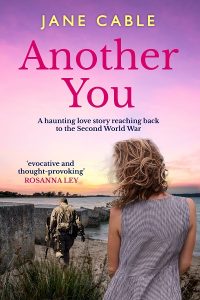
Although I hated history at school, in my adult life I have become a total history buff. Not history about royalty, wars and politicians though – the history of ordinary, everyday people. A history I feel connected to and is more often than not local.
For my contemporary romances the history I choose is sharply focussed, linked to the setting. For Another You, the most gripping part of Studland’s past was its role in the practices for D-Day, and for Endless Skies I decided to stay with World War Two. The book is set in Lincolnshire, so to my mind is inextricably linked with Bomber Command.
The wartime setting for Endless Skies is RAF Hemswell, now an industrial estate best known for its antiques centres and markets. In fact, that was the reason I went there in the first place. But wandering around the old barrack buildings, I could almost see the airmen on the stairs and hear the stamp of their boots in the parade ground. This had to be the place.
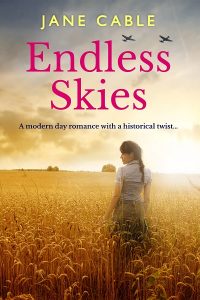 The staff at Hemswell Antique Centres were able to give me a leaflet with a short history of the base, and that set me off on my research. While we were in Lincolnshire I walked its buildings and roads then drove around the area, so I was totally familiar with the terrain, and once we were back at home I started to dig deeper.
The staff at Hemswell Antique Centres were able to give me a leaflet with a short history of the base, and that set me off on my research. While we were in Lincolnshire I walked its buildings and roads then drove around the area, so I was totally familiar with the terrain, and once we were back at home I started to dig deeper.
Here the internet is invaluable, and there are a number of websites giving the history of RAF bases. Hemswell was one of the first to be operational right at the beginning of the war, but as I dug deeper I found two Polish squadrons had been based there in 1942-3 and had suffered huge losses. I knew exactly where to focus my research.
This is where local history becomes exceptionally localised for me: one place at one point in time. In Endless Skies my protagonist, Dr Rachel Ward, is an archaeologist and my own work made me think of hers: researching a site, carrying out a survey, opening a trench, trowelling into every corner then digging out a single artefact. She finds … well, it would be spoiling the story to tell you. I find words.
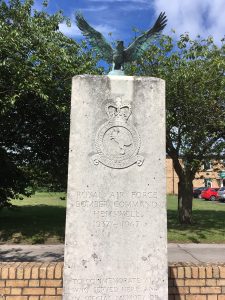
Hemswell War Memorial
But sometimes before you focus down you need to pan out, so I read around the subject: first-hand accounts from wartime bomber crews; memoirs of civilian life on RAF bases. For background on Hemswell itself I was very lucky – it was where The Dam Busters was filmed in the 1950s, and there was both a book and documentary about making the movie so I could watch almost contemporary footage.
There was also a treasure trove on the internet about the Polish airmen who crewed the station, and seeing photographs of them was quite an eerie experience. In fact, I ended up with far more information than I could possibly – or would want to – use in the book. But the level of detail gives me confidence my historical details are correct.
But equally interesting to me were the ghost stories associated with Hemswell: a pilot in flames on the runway, the echoes of 1940s music and the sounds of bombers taking off and landing. And having researched them, it would have been such a shame not to use at least one of them as well. Although my ghosts, of course, are completely fictional.
Click here to order ANOTHER YOU.
Click here to pre-order ENDLESS SKIES.
Keith Moray is the author of the SANDAL CASTLE MEDIEVAL THRILLERS, historical murder mysteries set in Yorkshire. The first two books in the series, THE PARDONER’S CRIME and THE FOOL’S FOLLY, are available to pre-order.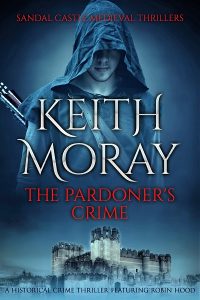
I live within arrowshot of the ruins of Sandal Castle. As a family doctor in Yorkshire, for thirty years I saw it most days while driving around the area on my morning visits. Nowadays, in semi-retirement I go running around the old battlefield where thousands of knights and soldiers once fought and died during the Wars of the Roses.
I plot and daydream when I run. Happily, a short story entitled The Villain’s Tale about a miscreant in a rat-infested dungeon in Sandal Castle won a Fish Award. It spurred me on to start plotting the Sandal Castle Medieval Thrillers.
Sandal Castle
The fine old motte and bailey was built in the 12th century by the De Warenne family during the reign of Henry I. From the 14th century it passed into royal ownership and is best known for its involvement in the Battle of Wakefield in 1460, when Richard, Duke of York was mortally wounded. His son, King Edward IV established it as one of the two bases for the Council of the North in 1472. Effectively, this was the government for the North of England. After he died, his younger brother, King Richard III began rebuilding the castle in 1483. The work stopped when he lost his life at Bosworth Field in 1485.
Thanks to television and movies, most people associate the outlaw Robin Hood with Sherwood Forest and Nottingham. However, the medieval ballads say that his stomping ground was actually Barnsdale Forest, which once covered a vast swathe of Yorkshire. The ballads also mention King Edward and various Yorkshire characters, such as George-a-Green the Pinder of Wakefield, and many actual locations in Wakefield are referred to.
The Court Rolls of the Manor of Wakefield
In medieval times, The Manor of Wakefield was the largest in Yorkshire and one of the largest in England, covering some 150 square miles. The Court Rolls of the Manor of Wakefield are a national treasure, consisting of a continuous recording of court proceedings from the late thirteenth century until the 1920s.
The outlaw and bowman Robert Hode, a sure candidate for being the historical Robin Hood, is mentioned in the Court Rolls of 1316.
The Sandal Castle Medieval Thrillers
 If you look at the picture of Sandal Castle today you will see exactly where I had the germ of the idea for The Pardoner’s Crime, the first novel in this series. It is a view of the castle from under what I fancifully call Robin Hood’s tree. I blended historical facts, medieval ballads and a good deal of imagination to come up with a historical whodunit.
If you look at the picture of Sandal Castle today you will see exactly where I had the germ of the idea for The Pardoner’s Crime, the first novel in this series. It is a view of the castle from under what I fancifully call Robin Hood’s tree. I blended historical facts, medieval ballads and a good deal of imagination to come up with a historical whodunit.
There are three completed novels and a fourth in the pipeline. They are not all about the same characters; indeed they are set at different times, because Sandal Castle with its fascinating history is the historical backdrop to them. They are all inspired by Chaucer’s The Canterbury Tales and some of the characters that he described so beautifully. The Pardoner’s Crime fuses The Canterbury Tales with the Robin Hood legends. The reader is challenged to uncover the true villain in each novel.
Click here to pre-order THE PARDONER’S CRIME.
Click here to pre-order THE FOOL’S FOLLY.
Sandal Castle image credit: Keith Moray
David Field is the author of the Carlyle & West Victorian Mysteries.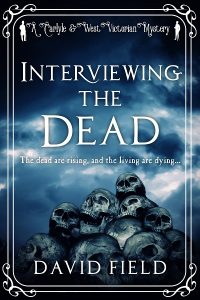
As a historical novelist in search of bygone eras to recreate, I’ve always been fascinated by the late Victorian period. It was a time of contrasts, with vast scientific, medical and technological breakthroughs coming at a time when ordinary folk were obsessed with communicating with the dead. Victoria seemed destined to rule forever over a rich empire, while her subjects in its industrial cities, and most notably in its London capital, were existing in conditions of abject poverty.
Following the success of my Esther & Jack Enright mystery series, which began with the search for Jack the Ripper and ended just as the nineteenth century was about to, I was urged to return to this rich seam of inspiration, and there was – for me, at least – one obvious place to start.
When Arthur Conan Doyle abandoned medical practice and created his fascinating character Sherlock Holmes, he was inspired by his memory of a real life Sherlock. His name was Dr Joseph Bell, and he had taught anatomy to his classes of medical students at Edinburgh University, one of whom had been Doyle himself. Bell had what was then a unique approach to his analysis of the cadavers that were to be found on his mortuary slab, something that is second nature to modern forensic examiners, but was revolutionary in its day. He approached ‘cause of death’ by examining, not just insides of the bodies, but the clothing and personal possessions with which they arrived, and telltale indications on the skin, such as needle marks, abrasions, rough working hands and suchlike. From this he made logical deductions that were of value to police in unexplained death enquiries, and he taught his students to apply the same techniques when they went out into the world.
There must have been several generations of medical graduates from Edinburgh who were taught ‘the Bell method’, and it was no great stretch of the imagination for me to create Dr James Carlyle, anatomist and general surgeon at Whitechapel’s London Hospital – a medical doctor with the same professional training as Conan Doyle and the same inquisitive, logical mind as Joseph Bell.
His first challenge – described in the first novel in my new series, INTERVIEWING THE DEAD – is to debunk the panicked belief among the populace of the East End that the spirits of those buried in a Plague Pit in Aldgate have returned to take their revenge for the disturbance of their resting place. That belief has taken hold easily, given the obsession with Spiritualism that gripped the country during this period.
But there were also other ‘spirits’ abroad, and they were advocating for great social change. Chief among these were the Suffragists, who campaigned for ‘votes for women’ and Suffragettes who took on entire police forces in public demonstrations. There were also other groups of feminists, as we would call them today, who advocated for equality of admission to professions such as medicine and the law. This was how Dr James Carlyle’s daughter, Adelaide, was created, as a young woman whose opinion of men and their dominance of society could not have been any lower – until she meets my third new character, Matthew West.
Although the Anglican Church was ahead of all other Protestant movements in the 1890s, it was demonstrating a social elitism that drove away ordinary working folk, and left the pastoral door open for more working-class religious initiatives and crusades among the poor. ‘Methodism’ had become a religious movement of its own, with its own hierarchy, but its progenitor, ‘Wesleyism’, still had its head above the parapet, and Wesleyan street preachers such as Matthew West might be found on corners, in market places, and outside factory and dockside gates.
Matthew has his own reasons for wishing to hose down any belief in the return of vengeful spirits of the dead, and when he finds himself associated with Dr Carlyle in the search for the truth, he comes up against the fiery Adelaide, who works as her father’s assistant. They influence each other’s views on life as they are drawn imperceptibly into a mutual attraction.
The stage is set for my next series. I hope you’ll join me in following the exploits of this unlikely trio, and I look forward to learning your reaction to them.
Click here to pre-order INTERVIEWING THE DEAD!
Sapere Books has reached its second birthday!
We now have a family of over 50 authors and plenty of chart successes under our belt.
To celebrate our first two years as a company, we threw a party in London and caught up with our fabulous authors over drinks and nibbles. All have exciting new projects brewing. Here is a taster of what to expect from our authors in 2020.
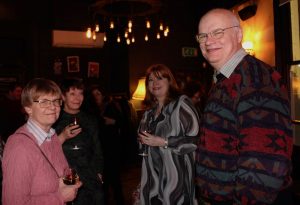
Alexandra Walsh and Graham Brack
Graham Brack is working on a historical fiction series, the Master Mercurius Mysteries, set in the 17th century. The first book, Death in Delft is already available to pre-order, and more will follow later this year.
Keith Moray has written the Sandal Castle Medieval Thriller series, historical murder mysteries set in Yorkshire. The first book, The Pardoner’s Crime, is available to pre-order, and more are soon to follow.
Alis Hawkins’ brand-new Medieval novel The Black and The White will be published later this month.
David Field is working on a brand-new Victorian mystery series, the Carlyle & West Mysteries, which will launch very soon.
Jane Cable has another thought-provoking romance with echoes of the past launching soon.

Stephen Taylor, Caoimhe O’Brien, and Keith Moray
Gillian Jackson has written a new psychological thriller, which will be released this summer.
Natalie Kleinman will be joining our excellent Regency Romance authors with her sparkling new books, which will feature strong and resourceful heroines.
Ros Rendle will be launching her Strong Sisters series this year – sweeping sagas that will explore family relationships and rivalries.
Seán Gibbons’ gritty urban crime series set in Galway will launch later this year.
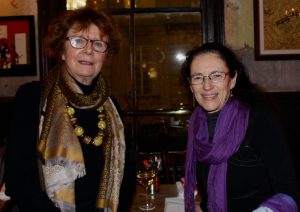
J. C. Briggs and Linda Stratmann
Stephen Taylor has a series of 18th century novels coming out soon.
And there are new books coming out soon from fan-favourite series, such as Alexandra Walsh’s Marquess House Trilogy, Elizabeth Bailey’s Lady Fan series, J C Briggs’ Charles Dickens Investigations series, Gaynor Torrance’s DI Jemima Huxley series, Charlie Garratt’s Inspector Given series, Michael Fowler’s DS Hunter Kerr series, Valerie Holmes’ Yorkshire Saga series, Marilyn Todd’s Julia McAllister series, Simon Michael’s Charles Holborne series, John Matthews’ Jameson & Argenti series and Linda Stratmann’s Mina Scarletti series.
For more information on our latest releases and ebook deals sign up to the Sapere Books newsletter.
To celebrate International Women’s Day (8th March) we asked five of our authors to tell us all about their favourite female writers. Read on to find out more about their literary heroines!
Alis Hawkins, author of The Black and the White and Testament
My all-time favourite author is Joanna Trollope. An odd choice for a crime author? Not at all. Wonderful writing transcends genre, and she inspires me by drawing characters with a fine eye to dialogue and interaction; by bringing whole scenes to life with a few telling details; by making her readers care passionately about what happens to her characters.
Joanna Trollope has shown me how essential it is to do your research meticulously, to immerse your readers in the world you’re writing about – whether it’s a cathedral close or a dairy farm, a ceramics factory or a Spanish vineyard – but never to include a single unnecessary fact that might slow the action down.
Each Joanna Trollope novel begins with a single key event that turns the lives of all her interrelated characters upside down – and what else does a murder at the beginning of a book do but that?
Order THE BLACK AND THE WHITE here
M. J. Logue, author of the Thomazine and Major Russell Thrillers
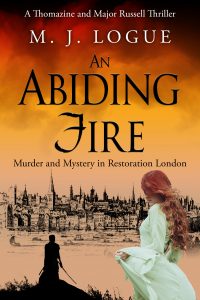 My busy little mind raced over all the possibilities – Tanith Lee, Storm Constantine, Dorothy Dunnett, Helen Hollick … but there can be only one, for me. Aphra Behn, of course. It’s not the what or the how of her writing, but the enigma and the old-school glamour of the writing persona she created – the international woman of mystery, the myths with which she surrounded herself – that inspires me. (Three hundred and fifty years later, she’s still a mystery!)
My busy little mind raced over all the possibilities – Tanith Lee, Storm Constantine, Dorothy Dunnett, Helen Hollick … but there can be only one, for me. Aphra Behn, of course. It’s not the what or the how of her writing, but the enigma and the old-school glamour of the writing persona she created – the international woman of mystery, the myths with which she surrounded herself – that inspires me. (Three hundred and fifty years later, she’s still a mystery!)
She was the first female literary professional, she did all her own publicity, and she’s still incredible. Possibly a spy, possibly bisexual – both, I suspect, images she manipulated to the hilt – and definitely a woman who knew how to work an audience. The fact that her plays and poems still resonate with us now is remarkable. She created characters that speak to us, no matter what clothes they’re wearing.
Or find out more about the Thomazine and Major Russell Thrillers here
Deborah Swift, author of Past Encounters and The Occupation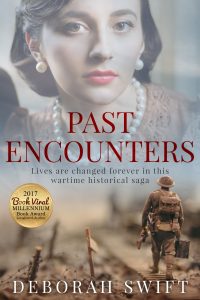
The first Rosie Tremain novel I read was Music and Silence, set in the Danish court in the early 17th Century. Marvellously atmospheric, it shifts between different narrative styles: small vignettes that add up to a magnified version of life in Copenhagen that is so real, you feel you are there.
I’ve read all her other books since, including the more contemporary The Road Home, about an economic migrant arriving in the UK, who observes with bafflement the English obsession with status and success. I admire Tremain’s precision, and that is something I want to achieve in my own writing.
Gaynor Torrance, author of the DI Jemima Huxley Thrillers
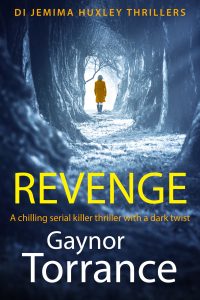 I write in the genre I love to read, and being an avid reader of crime fiction, there are so many female authors whose work I admire. A particular favourite of mine is Sophie Hannah. I first stumbled across her books by chance, when I borrowed a copy of Little Face from my local library. Once I started reading, I couldn’t put it down.
I write in the genre I love to read, and being an avid reader of crime fiction, there are so many female authors whose work I admire. A particular favourite of mine is Sophie Hannah. I first stumbled across her books by chance, when I borrowed a copy of Little Face from my local library. Once I started reading, I couldn’t put it down.
Since finishing that particular book, I’ve worked my way through much of the Culver Valley Crime series. I adore the originality and complexity of Sophie’s plots, which have lashings of intrigue and misdirection. The central characters, DS Charlie Zailer and DC Simon Waterhouse, are such a great pairing. They’re both so dysfunctional and vulnerable in many ways, yet somehow form a compelling and likeable team.
Or find out more about the DI Jemima Huxley Thrillers here
Alexandra Walsh, author of The Marquess House Trilogy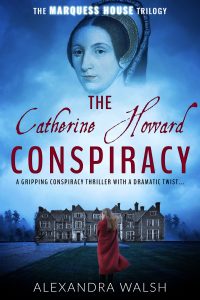
She may be old-fashioned, and her comments can make me wince, but take away the occasionally dubious contents of a bygone era and Enid Blyton remains a huge inspiration with the breadth of her storytelling skill. In her adventure books, her plotting is deft and sharp, while in her fantasy books her imagination is broad and tantalising.
As a child, she shaped my reading habits but my eureka moment came when I was reading In the Fifth at Malory Towers. I was already harbouring ambitions to be a writer, but it was only a dream. Then, the heroine of the series, Darrell Rivers, wrote the school pantomime. Suddenly, I thought, If Darrell can do it, then so can I! My life path was set. From reading Enid Blyton’s work, I learned that girls were stronger and more effective if they worked together, that girls could do as much as boys and usually more, and that if you were determined you could solve anything – lessons that still resonate today.
Order THE CATHERINE HOWARD CONSPIRACY here
Or find out more about The Marquess House Trilogy here
DEATH IN DELFT by Graham Brack is the first historical murder investigation in the Master Mercurius Mystery series: atmospheric crime thrillers set in seventeenth-century Europe. Click here to pre-order.
Most crime writers have a keen sense of place. Something about a setting grabs them and tells them there is a story here.
So it was with me. When you live in Cornwall, the quickest place to get to on the continent is Amsterdam, because there is a flight from Exeter, so over the years my wife and I have been frequent visitors to the Netherlands.
The first place we went was Delft. As is well known, Delft is the city of Vermeer; but it is also the city of Antony van Leeuwenhoek, the father of modern microscopy. Not only did they live within around 250 metres of each other, they were born within a few days of October 1632. Can you imagine being a schoolteacher who had two such boys in their class?
I was turning this around in my mind when the idea came to me that people often ask whether detection is an art or a science. Well, if these two could not tell you, who could? Making them into detectives in their own right would be a bit of a stretch, but they could vie to assist a third person, and that’s how my Dutch series was born.
In the year 1671, three young girls disappear from their homes in Delft. Two come from poor families, but one is the daughter of a local dignitary. The mayor recognises that he needs help to find these girls, and writes to the nearby University of Leiden, asking the Rector to send the cleverest man he can spare.
Master Mercurius is undoubtedly clever. He is, in effect, an Oxbridge don transported to another time and country, but like many an academic he is completely wrapped up in his subject – moral philosophy – and has very little experience of the world. He does not want to let the Rector and the University down, but he is acutely aware that brains alone will not solve this mystery. Fortunately, he has Vermeer and Van Leeuwenhoek to help, and together they set out to retrieve the girls and discover the culprit. In a nutshell, that is how I came to write Death in Delft, in which Mercurius narrates – very frankly – his experiences.
I don’t think it counts as a spoiler if I say that he is successful and returns to his study with something of a reputation. Unfortunately for him, in 1674 the Stadhouder – the man we know as King William III – needs some assistance in putting down a conspiracy which seeks to remove him from power. It seems likely that someone in high places is pulling the strings, so William needs an intelligent outsider to look into the matter, and his gaze falls upon Mercurius, who is summoned from Leiden. In Untrue till Death Mercurius will find himself personally threatened – and since he is no man of action, he does not enjoy it at all.
However, success in unravelling this mystery only means that when William next needs help he thinks once more of Mercurius, so in 1676 our hero is packed off on a boat to London as part of the embassy negotiating the marriage of William III and Princess Mary. The trouble is that somebody does not want the wedding to go ahead, so in Dishonour and Obey Mercurius finds that there is more to marriage preparation than sitting down with the young couple to talk them through their vows.
Mercurius is a very reluctant detective, as he never tires of telling us. He likes nothing better than sitting quietly reading a book, ideally in a tavern where people leave him alone. As a man of the cloth, he has a strong moral sense but he is a bit squeamish about the punishments of the day. Of course, he knows that a couple of hours of misery on a scaffold are nothing compared with what awaits an unrepentant criminal in the next life, but he feels responsible for one and not for the other.
He also has no idea at all about women. He is not immune to their charms; in fact, he spends much of his time under the spell of young women, but Mercurius has a little secret.
And no, I’m not going to tell you what it is. You’ll have to read the books to find out.
Celebrate Valentine’s Day with a timeless love story! We’ve chosen four of our favourite romantic reads for you this February.
Summer at Hollyhock House, Cathy Wallace
After breaking up with her long-term boyfriend, Faith Coombes is looking for a new start. Her search leads her back to where she began: the village where she grew up, home to her best friend and an old flame. As the summer wears on, Faith finds solace in her familiar surroundings, and her feelings for the boy she once adored begin to rekindle. But as memories of hurt and heartbreak start to resurface, Faith must decide whether she can put the past behind her and give love a second chance.
A charming and heart-warming tale of missed opportunities, self-discovery and the bittersweet sting of true love, Summer at Hollyhock House is sure to bring both tears and laughter.
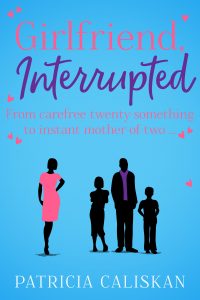 Girlfriend, Interrupted, Patricia Caliskan
Girlfriend, Interrupted, Patricia Caliskan
After a whirlwind romance, Ella Shawe takes the plunge and moves in with her boyfriend, Dan – plus his two children and pet dog. Far from domestic bliss, Ella must now learn to cope with a resistant family, a hellish mother-in-law and Dan’s impossibly perfect ex-wife. But with the future of her blossoming relationship on the line, Ella is determined to find a way to fit into the chaos…
Full of modern dilemmas and sparkling humour, Girlfriend, Interrupted is a fabulous British comedy with a spirited and relatable heroine at its heart.
Women Behaving Badly, Frances Garrood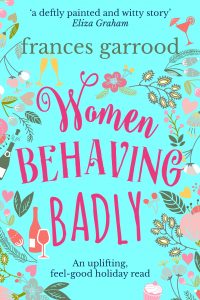
Three very different women are all stuck with impossible romances: Alice has an irresponsible ex and a noncommittal lover; Mavis is having an affair with a father of two; and Gabs is a high-class escort who has fallen in love with someone she can never be with. In the eyes of the Catholic church, all three women have gone astray. But their priest, Father Cuthbert, is determined to reform them. As Alice, Mavis and Gabs form an unlikely friendship, each begin to question what is most important to them – and it soon becomes apparent that the lively trio can’t be ‘cured’ that easily…
Original, uplifting and fabulously witty, Women Behaving Badly is a moving tale of heartache, self-love and the warmth and power of female friendship.
Following the breakdown of her marriage, Marie is still learning to heal. But as the head chef of The Smugglers – the pub co-owned by her ex-husband – she finds herself constantly stretched and plagued by headaches. With local celebrations planned for the 60th anniversary of D-Day, Marie expects to be busier than ever – but she could never have prepared for the changes that are about to hit. Paxton, a charming American soldier, seems to be just what Marie is looking for: a bit of light-hearted fun. But as they grow closer, she begins to wonder if he is all that he seems…
Drawing on World War II history as well as the horrors of modern combat, Another You is a sweeping story of trauma, courage, and self-reclamation.
Like the look of these romantic reads? Sign up to the Sapere Books newsletter for new releases and deals in romantic fiction.
Sapere Books are proud to be sponsoring the Romantic Novelists’ Association’s Popular Fiction Award. Read on to find out more about this year’s sparkling shortlist!
The Glittering Hour, Iona Grey, Simon & Schuster
Set in 1925, The Glittering Hour is a beautifully written historical saga with a clandestine romance at its core. Young socialite Selina Lennox lives a life of reckless hedonism: drinking, partying and often having her exploits captured by the press. However, one night, a chance encounter with struggling artist Lawrence Weston changes everything. An intense attraction between the two blossoms into forbidden love, but as the summer draws to a close, the dark side of pleasure is revealed to both.
Ten years later, Selina’s nine-year-old daughter, Alice, is staying at Blackwood Hall with her grandparents. And as she reads Selina’s letters, the mystery of her mother’s past heartache begins to unravel…
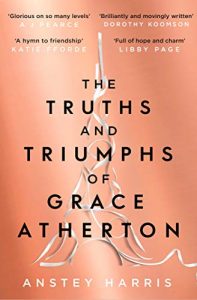 The Truths and Triumphs of Grace Atherton, Anstey Harris, Simon & Schuster
The Truths and Triumphs of Grace Atherton, Anstey Harris, Simon & Schuster
The Truths and Triumphs of Grace Atherton is a charming, powerful story of friendship and healing in the face of heartbreak. Residing in Paris with her long-term partner, cellist Grace Atherton lives in a blissful bubble of music and love. But when her world falls apart, Grace seeks comfort from two unlikely allies: eighty-six-year-old Maurice Williams and tough-talking teenager Nadia. All three have buried secrets and sufferings but, as their bonds grow, each are gradually compelled to open up. As the pain of the past begins to ease, the trio embark on a journey toward renewed happiness, self-acceptance, and hope.
The Flatshare, Beth O’Leary, Quercus Fiction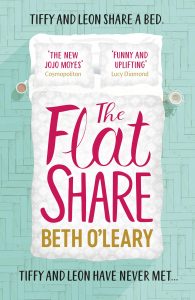
The Flatshare is a quirky, uplifting romcom that follows two people thrown together at just the right moment. When her relationship falls apart, Tiffy Moore agrees to share a one-bedroom flat with Leon Twomey. However – since Tiffy works 9 to 5 and Leon is a palliative care nurse who works nights and weekends – the two initially never meet. Through post-it note conversations, Tiffy and Leon slowly win each other’s trust and friendship, and are able to support each other through the pressures and frustrations of their difficult circumstances. With its poignant explorations of justice and unhealthy relationships interwoven throughout, The Flatshare is both an entertaining and heart-warmingly tender read.
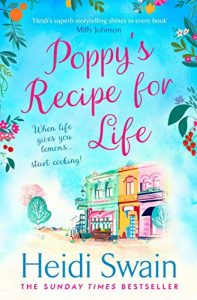 Poppy’s Recipe for Life, Heidi Swain, Simon & Schuster
Poppy’s Recipe for Life, Heidi Swain, Simon & Schuster
Poppy’s Recipe for Life is a warm and witty story of unlooked-for romance, family ties, inner demons, and the power of community. Poppy can’t wait to live out her dream of moving into a cosy cottage in Nightingale Square, close to a community garden where she can indulge her love of making preserves and pickles. However, when old family tensions once again bubble to the surface, her idyllic happiness is threatened. Amidst the complications, Poppy must also learn to get along with her prickly new neighbour, Jacob. But as the two grow closer, she begins to realise that the surly recluse may be more than he seems…
The winner will be announced at Leonardo Royal London City Hotel on Monday 2nd March.
Jean Stubbs is the author of the INSPECTOR LINTOTT INVESTIGATIONS series and the BRIEF CHRONICLES series. In celebration of her life and work, we asked her daughter, Gretel McEwen, to share her memories of Jean and her writing.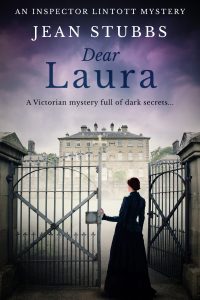
We lived in a world of stories, the line between reality and fiction often blurred. As a child, my mother had always made up plays and stories — her brother an unwilling but worshipful bit part player. A generation later, my mother made up fictional characters for my brother and I — she brought them to life with special voices and we talked to them. Alfred was a gentle and not very bright giant whose answer to any question was 29!
My mother had her first novel, The Rose Grower, published at the age of 35 and from that moment our house was filled with a whole cast of characters. I came home from school one day to find her weeping over the death of Hanrahan (Hanrahan’s Colony). And the hanging of Mary Blandy (My Grand Enemy) brought very dark clouds into our house.
As my mother surfed her way through this creative theatre, we learned to read the signs — coffee cups on every surface, a sink full of dishes and no plans for supper meant a good and productive writing day. A house full of the smell of baking, a gleaming kitchen and rice pudding in the oven either meant the dreaded writer’s block or a completed first draft. So we too surfed, adjusted and gloried in the passing show. My mother always wrote on our vast Edwardian dining table, and her writing companion was always the current much-loved cat. They had their own specially typed title page upon which to sit, since she had learned the hard way that cats like to sit on the top copy with muddy paws! The mystery cat was the black one who sat on a certain stair — but when you went to stroke him he was not there … another blurred line…
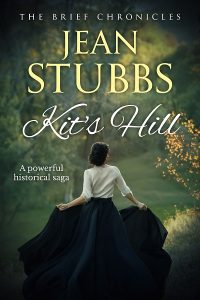 I felt closely involved with each novel as it progressed. At the end of a good writing day, my mother would read aloud to me the latest chapter — a fine reader with a different voice for each character, once more bringing it all to life. She wrote in long hand at first, then, as the book grew, she typed chapters then full copies and carbon copies for her publisher, Macmillan. Later, she was one of the early authors to use a word processor. When the first print draft came from the publisher, we would sit at each end of the dining room table and proofread — calling out corrections to each other and marking them on the manuscript.
I felt closely involved with each novel as it progressed. At the end of a good writing day, my mother would read aloud to me the latest chapter — a fine reader with a different voice for each character, once more bringing it all to life. She wrote in long hand at first, then, as the book grew, she typed chapters then full copies and carbon copies for her publisher, Macmillan. Later, she was one of the early authors to use a word processor. When the first print draft came from the publisher, we would sit at each end of the dining room table and proofread — calling out corrections to each other and marking them on the manuscript.
Publication day was a celebration, shopping an occasion, dinner parties a reason for more excellent cooking, and royalty cheques a relief! When I left home, I greatly missed being a bit part player in this imaginative and unpredictable life of stories — and I missed the ghostly companions.
CLICK HERE TO FIND OUT MORE ABOUT THE INSPECTOR LINTOTT INVESTIGATIONS
CLICK HERE TO FIND OUT MORE ABOUT THE BRIEF CHRONICLES
Deborah Swift is the author of PAST ENCOUNTERS and THE OCCUPATION.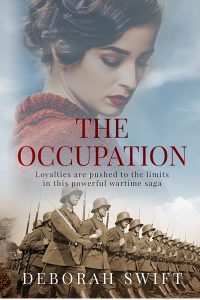
During World War Two, the Channel Islands were the only part of the British Isles to be occupied by the Germans. I saw a picture online of a British ‘bobby’ or policeman talking to a Nazi soldier, and it sparked my interest. Jersey is a tiny island, only eight miles long, so I was fascinated to find out how the population managed to keep up their morale, when as many as fifteen thousand (yes, you read that right) Germans had taken over. What happened to the Jews on the island, or to the other groups that the Nazis considered ‘undesirable’? How did it feel to be invaded by a foreign army?
The story became much more interesting and involved the more I uncovered. At the beginning of the war, Jersey had been ‘stood down’ for military action, as nobody believed the Germans would want such a small territory. Men of fighting age had been sent elsewhere, so it was a population of women and farmers. When the invasion came, it was a total surprise and there were no defences in place. After a brief bombing campaign, the German army just walked in. Before long, white ‘surrender’ flags were fluttering from Jersey houses.

German soldiers standing in King Street, St Helier, Jersey
This was the beginning of Nazi rule on the islands, which was supposed to be a ‘peaceful’ occupation. Of course, when you are invaded it might look peaceful, but underneath the tensions soon began to show. The oppressive Nazi force vastly outnumbered the British people left on the island. Those that remained had to find ways to resist, and ways to outwit the unwanted intruders in their traditional way of life. German rule took over – people had to speak German, cars had to drive on the right, many things that had been allowed before, such as owning a car or a radio, were ‘verboten’ – forbidden. The Germans began a vast building programme to fortify the island, which they intended to use at a military base to attack England. The vast concrete fortifications were built by slave labour.
My story is based on several true accounts, although I have welded them together and compressed them into a fictional narrative. Céline and Rachel’s story was inspired by the true Jersey story of Dorothea Weber, who hid her Jewish friend Hedwig Bercu from the Germans. More on this surprising real life story can be found here.
Fred’s story in The Occupation is based on a number of accounts of life in the Germany army, and in the French Resistance. I was interested to examine the idea of occupation from the point of view of both the occupier, and the occupied. What always interests me in fiction is the conflicts that arise because of the circumstances of war, where one nation is pitted against another, and people who might have been quite amicable before the conflict are forced to swear allegiance to a sharp division between one side and another, when in reality, and in people, many shades of grey exist.
For an overview on the occupation of Jersey, the BBC history site has several pages on this topic. For more on Deborah’s books, find her at www.deborahswift.com or on Twitter @swiftstory.
CLICK HERE TO ORDER THE OCCUPATION
Image Credit: Bundesarchiv, Bild 101I-228-0326-34A / Dey / CC-BY-SA 3.0. Accessed via Wikimedia Commons.

